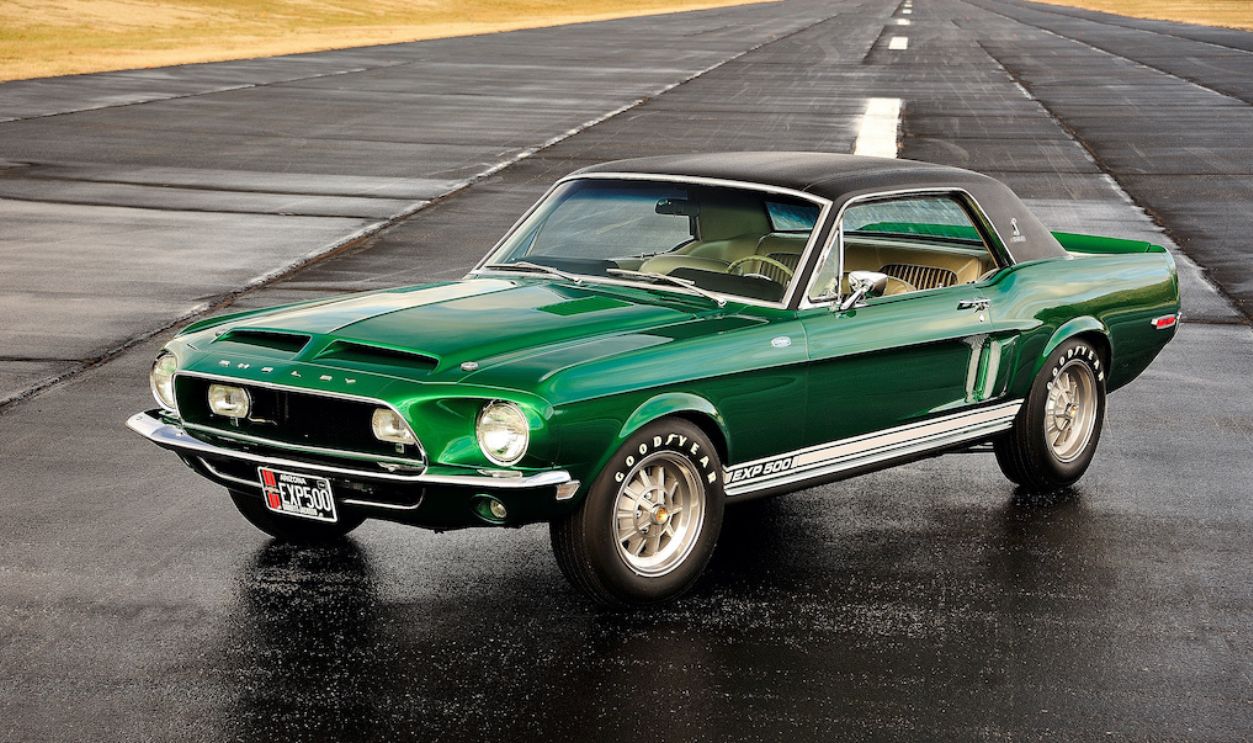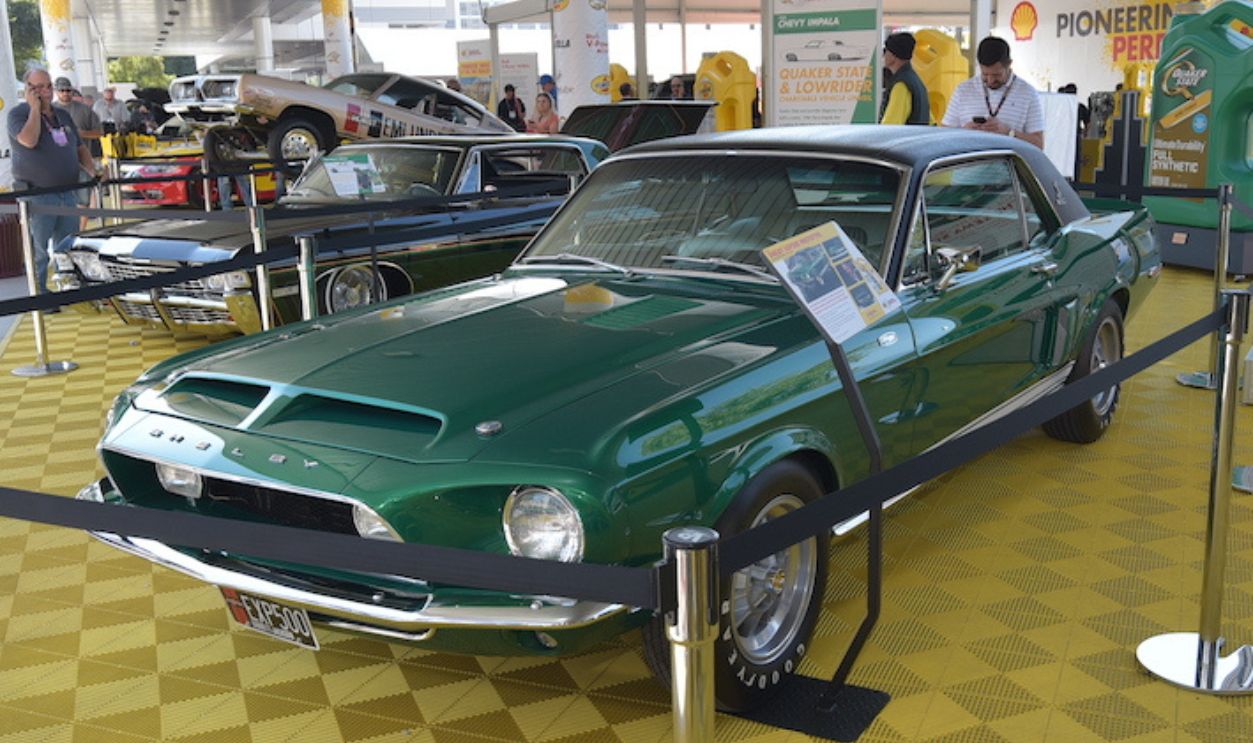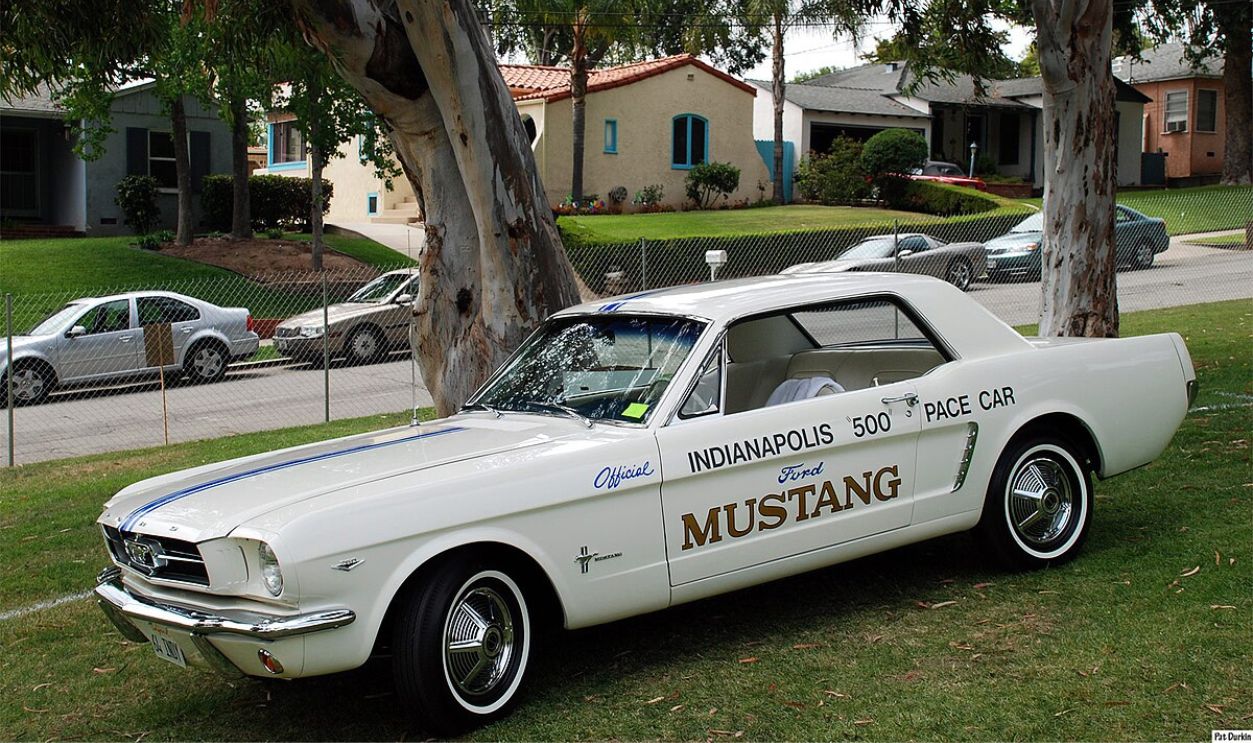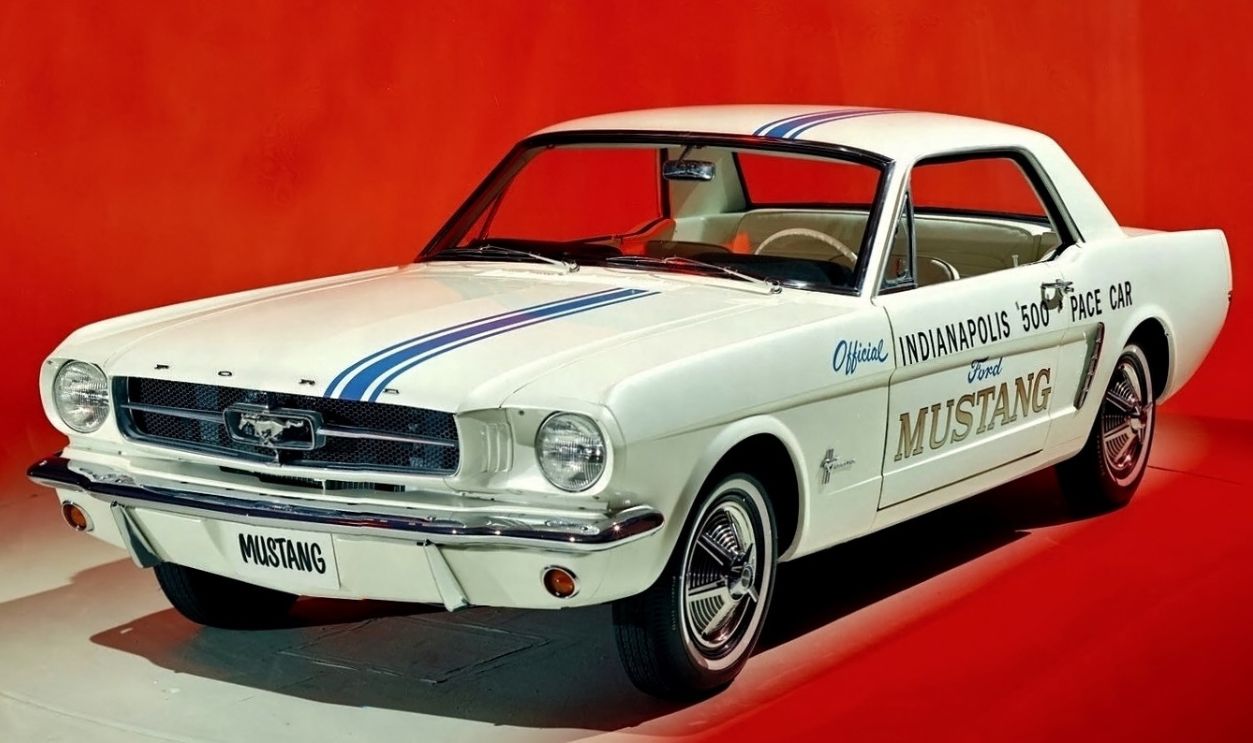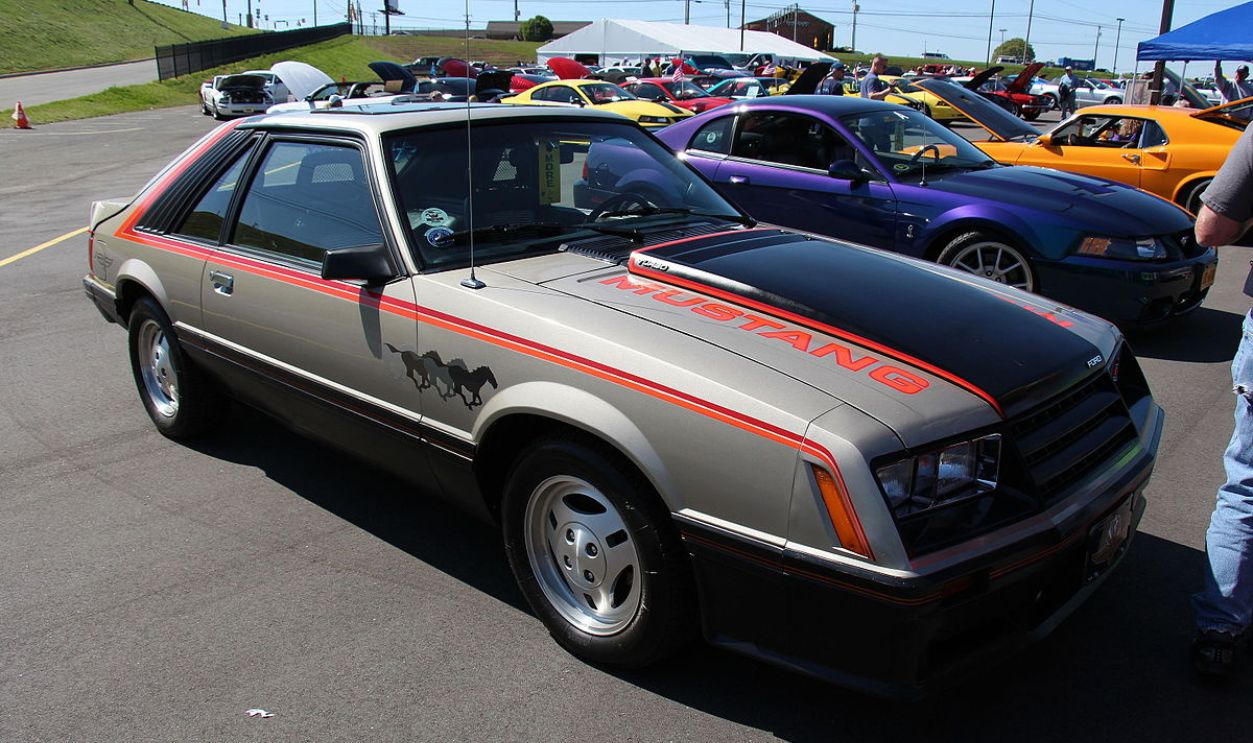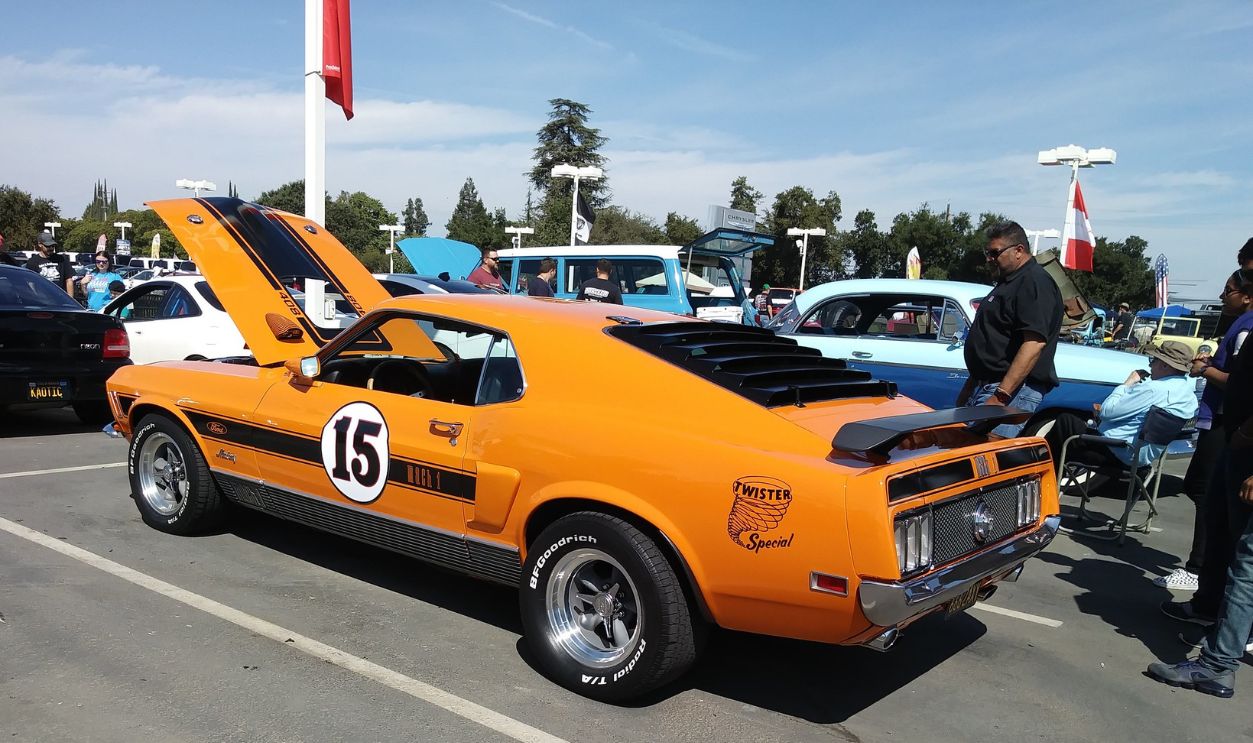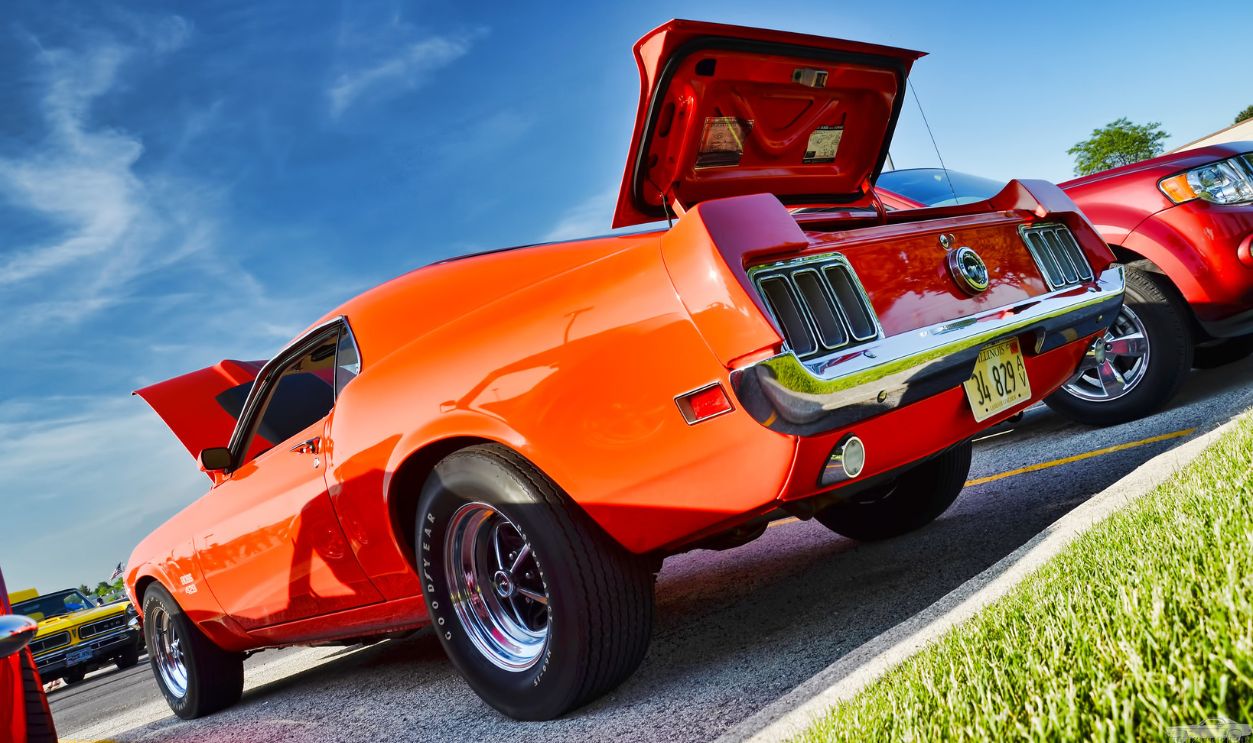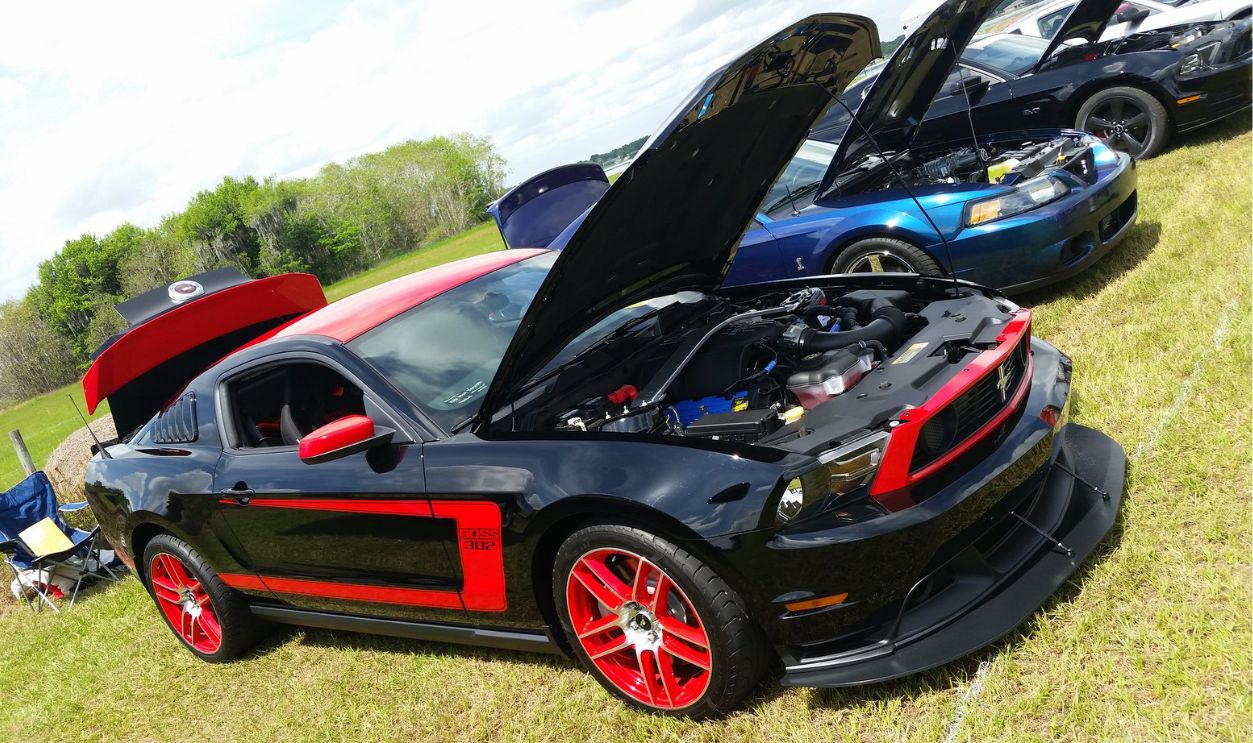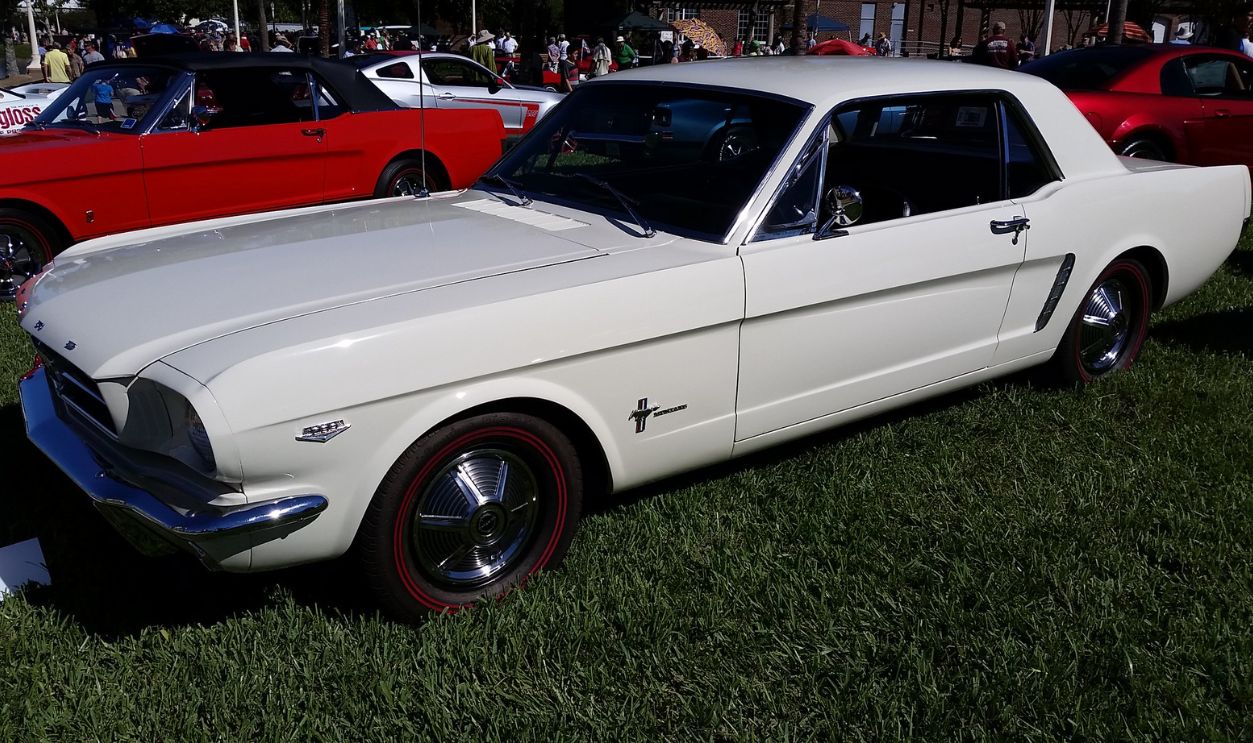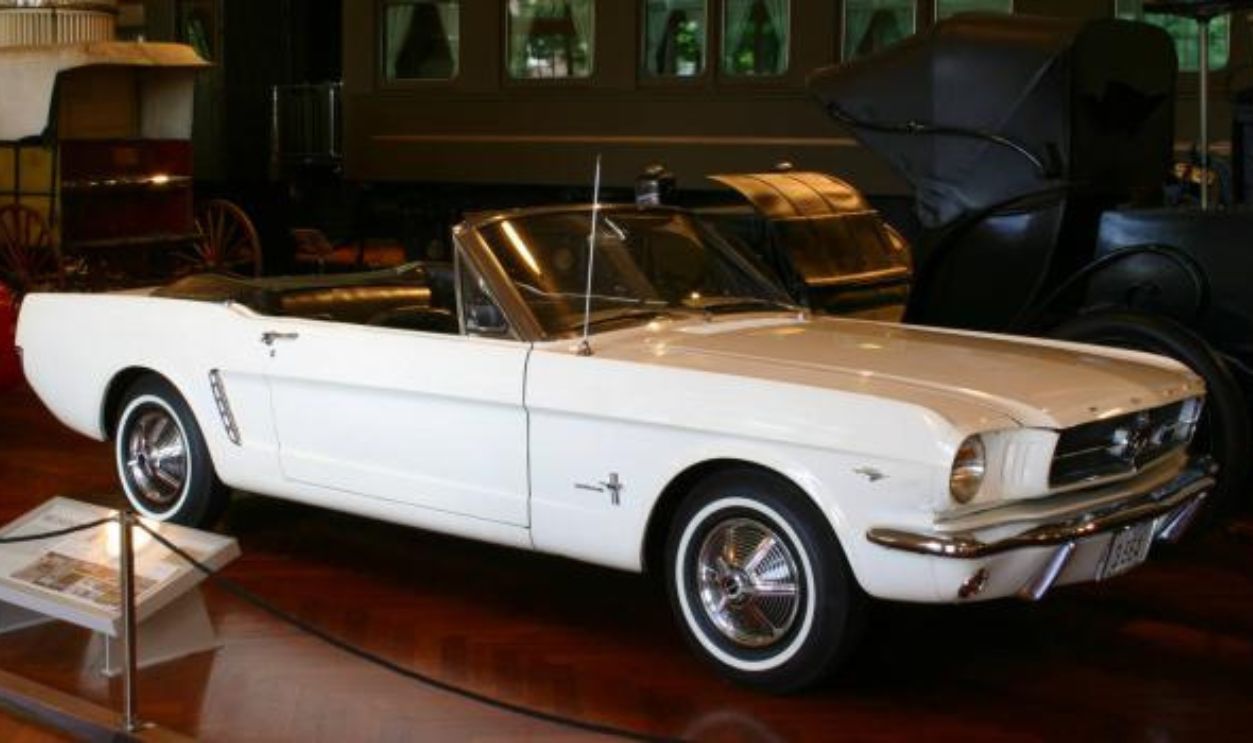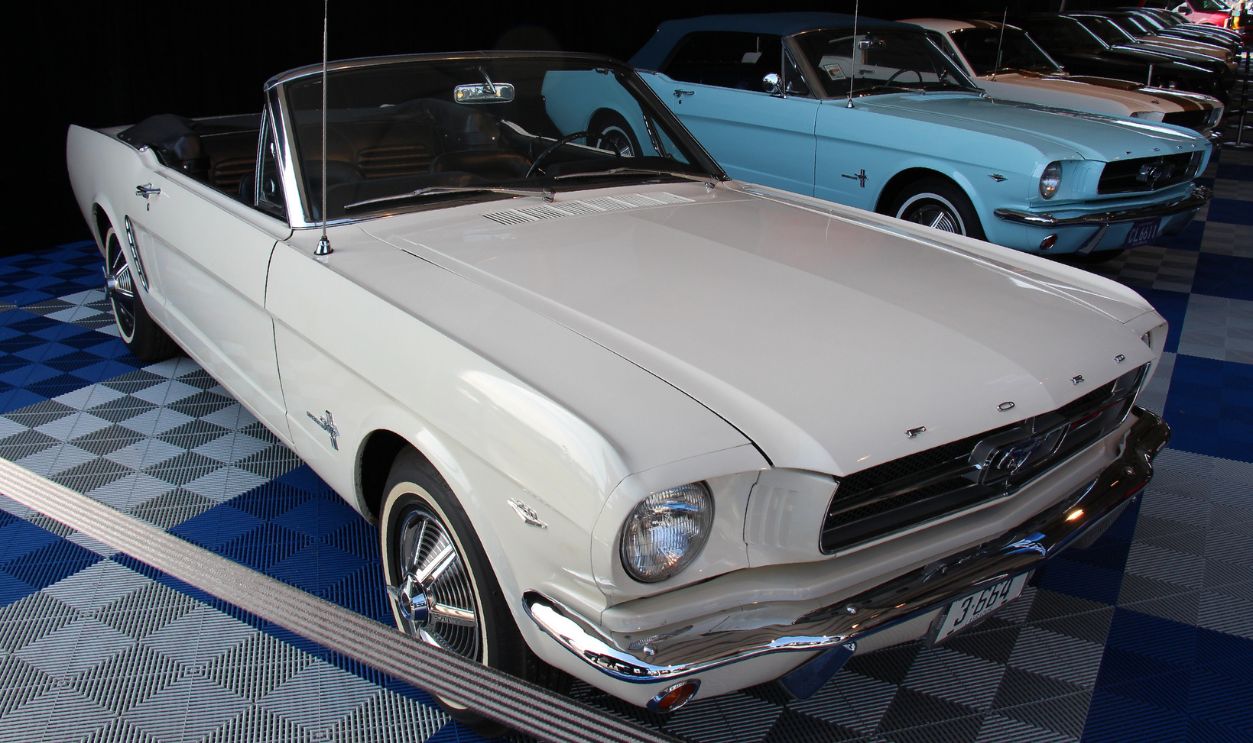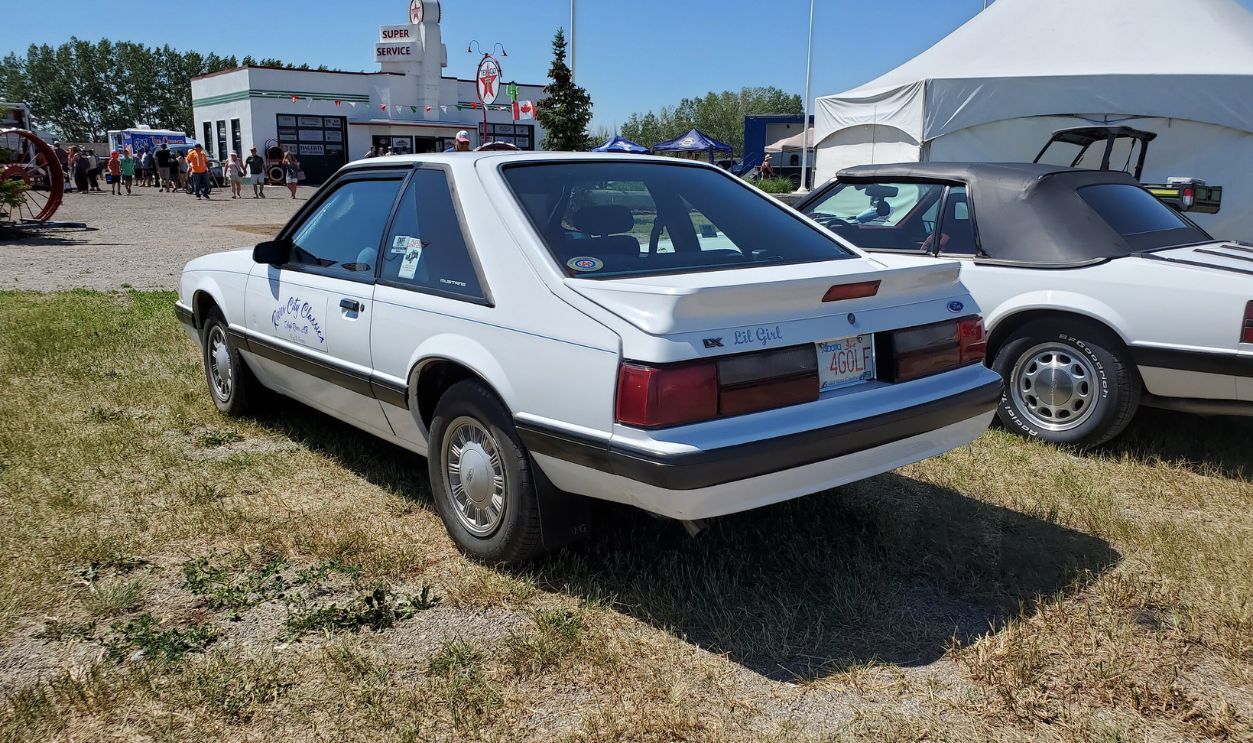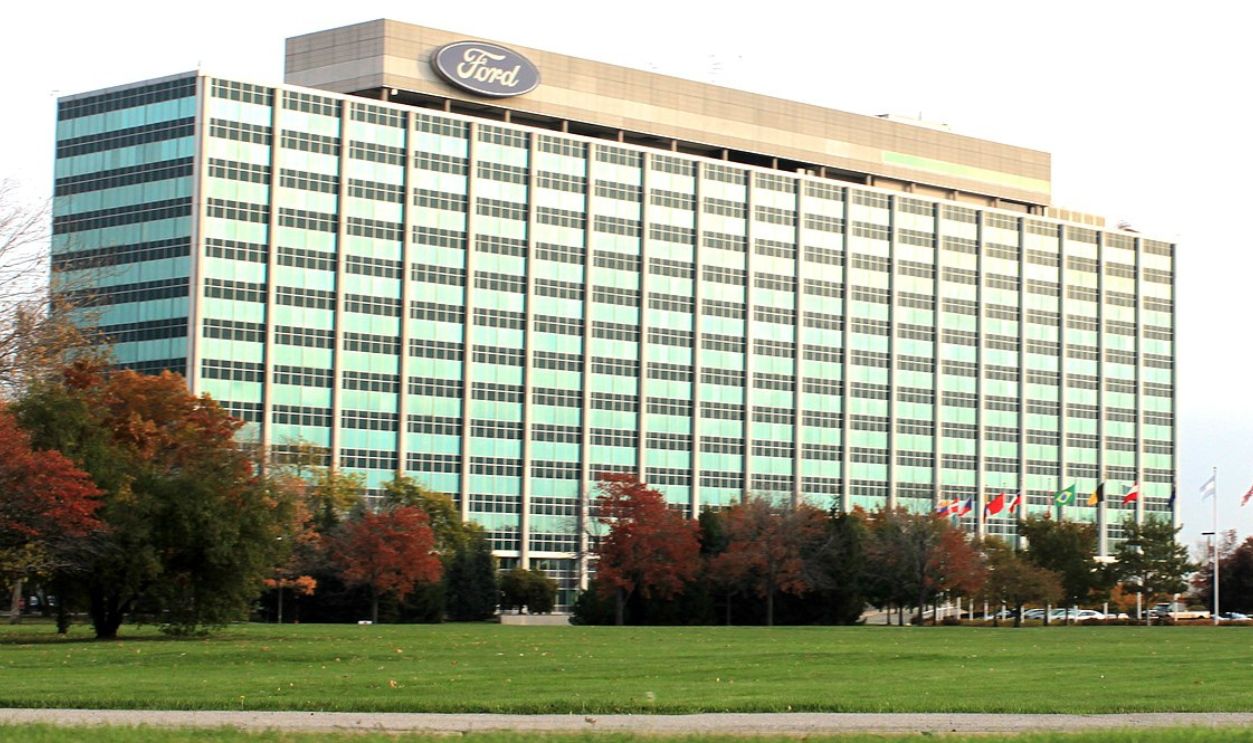A solid engine, impressive performance, highly customizable, and innovative design—the Ford Mustang is a powerhouse. Since 1964, Ford has sold over 10 million Mustangs across generations, but this lot of ten is unique.
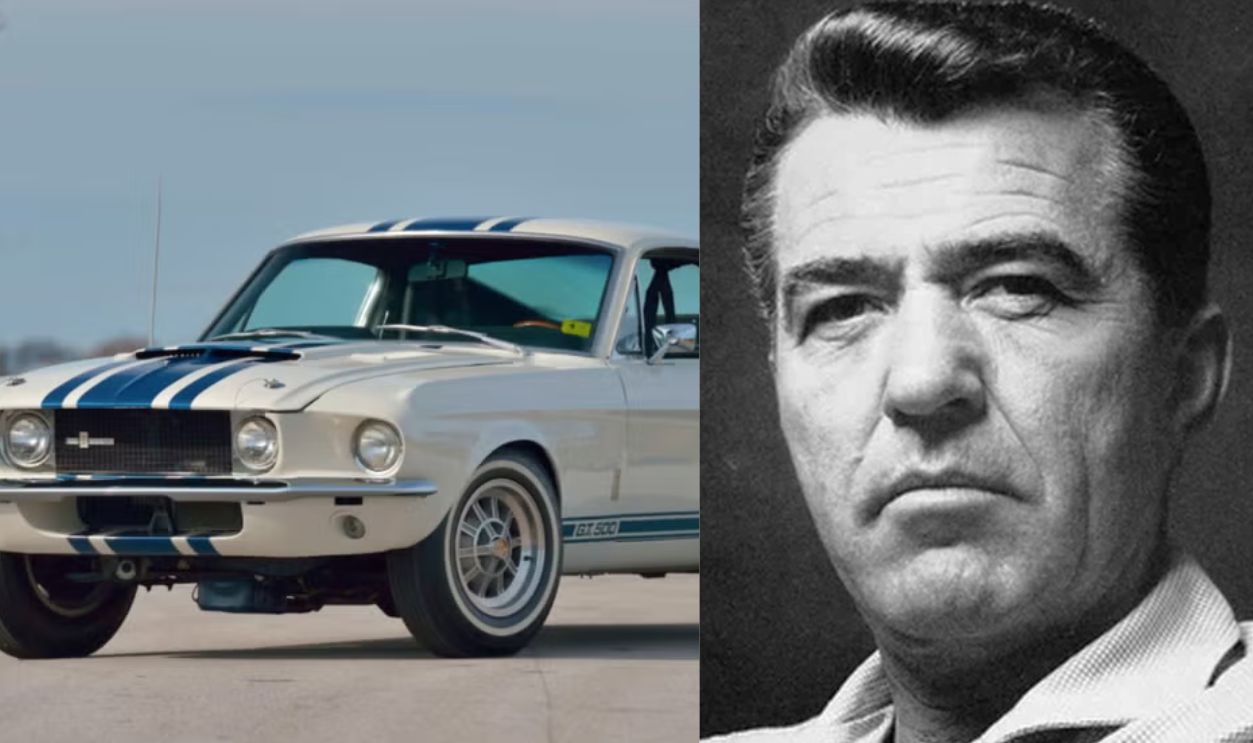
1. 1968 Shelby EXP500 "Green Hornet"
Starting us off is the 1968 Shelby, but you can also call her the Green Hornet. Ford only produced one of these, and the name was drawn from its color. The Green Hornet rides smoothly, with an independent rear suspension, four-wheel disc brakes, and Conelec fuel injection.
2. The EXP In EXP500 Means Experimental
This one-off build was meant for research and development, where Carroll Shelby and his team at Shelby America aimed to build a car using advanced automotive tech and performance enhancements. The result?
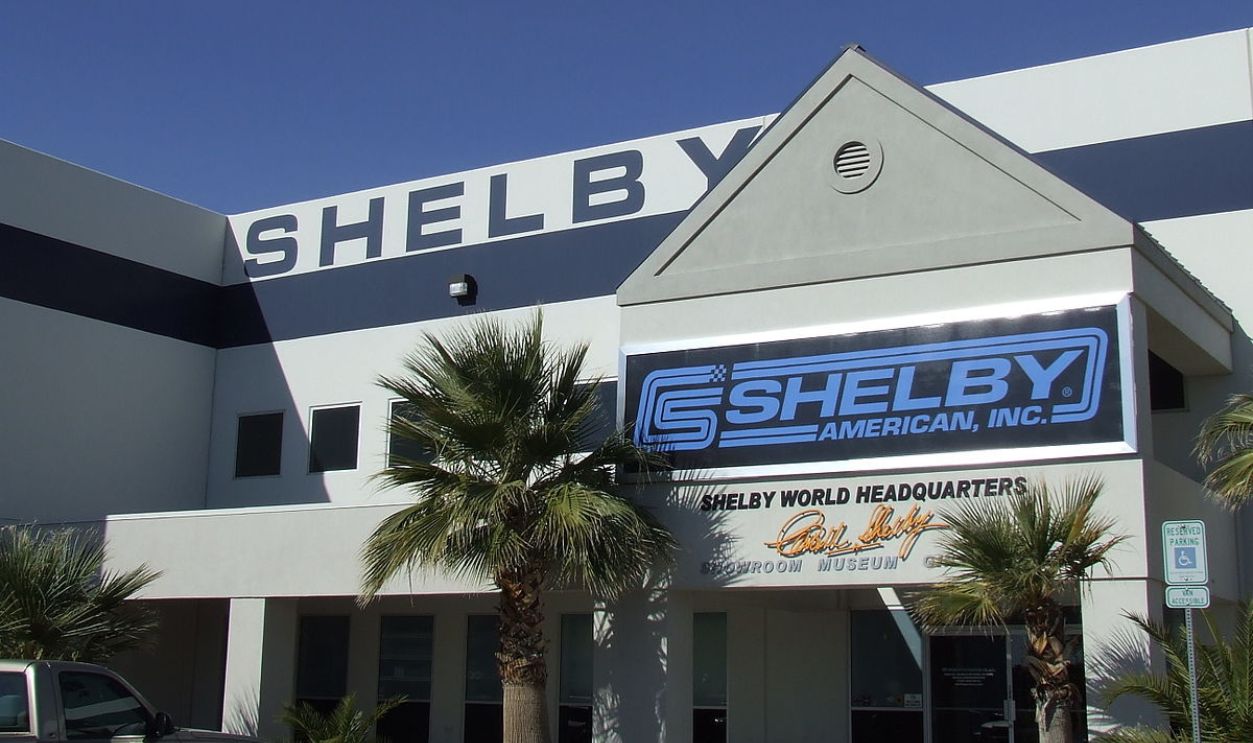 Jaydec, CC BY-SA 3.0, Wikimedia Commons
Jaydec, CC BY-SA 3.0, Wikimedia Commons
3. Here’s How The EXP500 Redefined Expectation
First, the independent rear suspension improved handling and ride quality. The four-wheel disc brakes meant a quicker break during an emergency. Finally, the Comelec fuel injection enhanced fuel efficiency and performance. All the things a Ford Mustang exudes!
4. Caroll Shelby Was The Right Man For The Job
What credentials would you need to prototype a car? Here is a hint based on Shelby’s credentials: He was a racing driver, automotive designer, and innovator. His team comprised experienced engineers with proven track records.
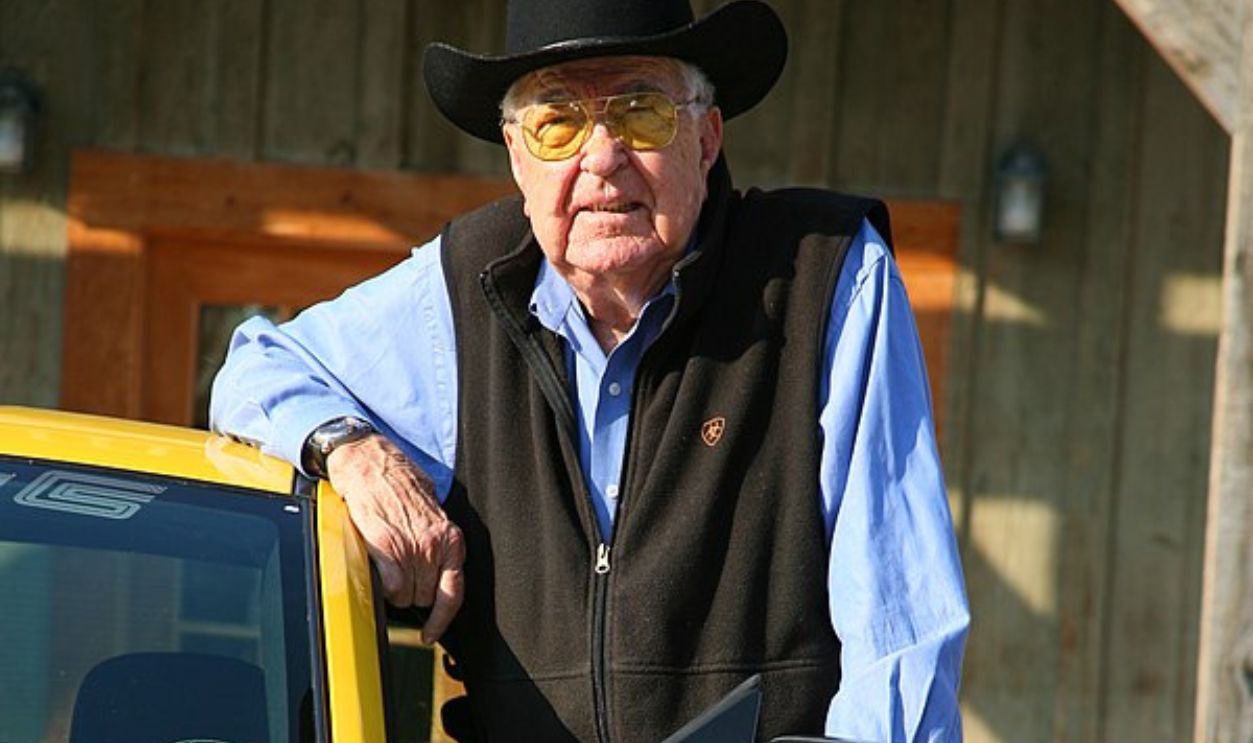 Bwilliams85, CC BY-SA 4.0, Wikimedia Commons
Bwilliams85, CC BY-SA 4.0, Wikimedia Commons
5. Who Owns The Shelby EXP500 Today?
Craig Barret, the CEO of Barrett-Jackson, a classic and collector car auctioning company, owns the Green Hornet. He acquired the EXP500 in 2003 and has since made changes to restore it to its former glory. In 2018, the ride’s four-wheel disc brake was era-corrected.
6. 1967 Shelby GT500 Super Snake
Another one-off car, the 1967 Shelby GT500 Super Snake, is owned by the Larry Miller family, who display it at the Shelby Heritage Center in Las Vegas. The Super Snake has a race-inspired 427 cubic inch V8 engine that produces 520 hp—the same as the winning Le Mans GT40.
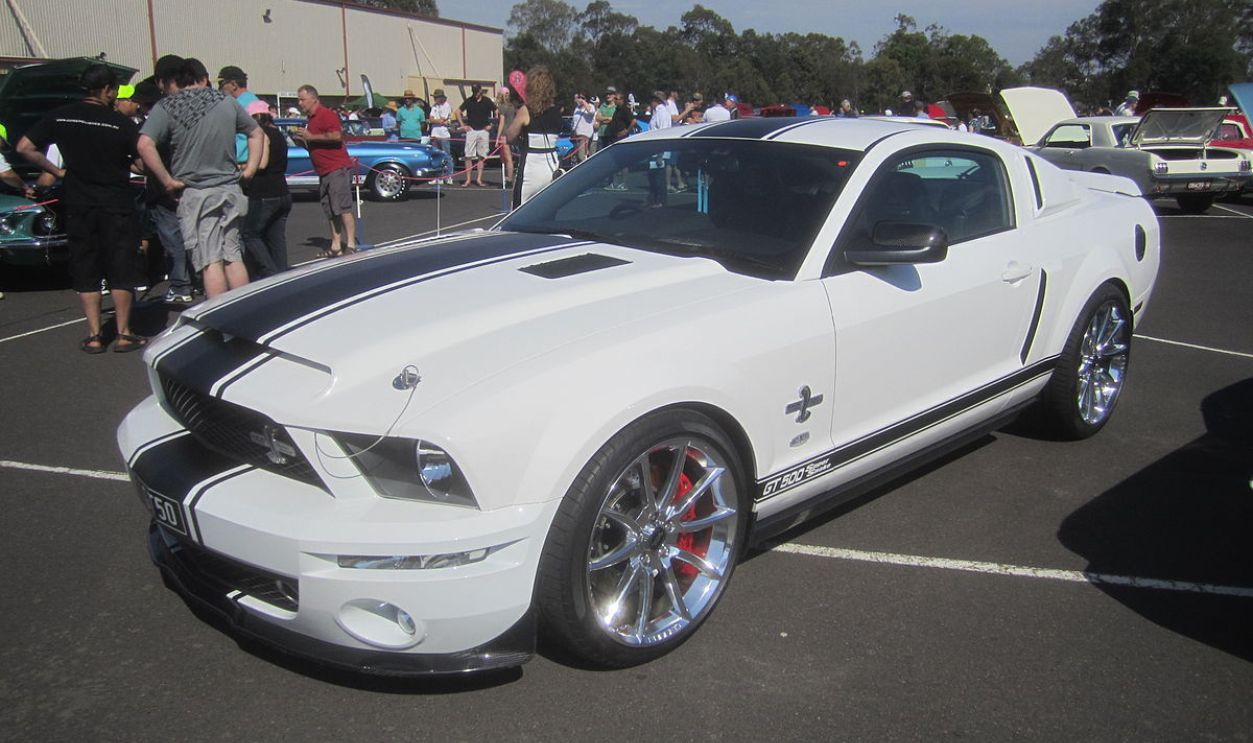 Sicnag, CC BY 2.0, Wikimedia Commons
Sicnag, CC BY 2.0, Wikimedia Commons
7. A Muscle Car With A Marketing Background
The 1967 Super Snake was another example of Caroll Shelby’s ingenuity but with a twist. The car was a promotional vehicle for Goodyear, the tire company. The campaign was to showcase the company’s Thunderbolt tires. Here is how that went:
 Sherry Lambert Stapleton, CC BY-SA 2.0, Wikimedia Commons
Sherry Lambert Stapleton, CC BY-SA 2.0, Wikimedia Commons
8. The Shelby-Goodyear Collab
Goodyear approached Shelby, their West Coast distributor, with a proposal: Build an exceptional car for a high-speed test of our tires. Shelby and his team fit the GT500 with a unique engine and 10-spoke aluminum wheels mounted with 7.75-15 Thunderbolt Whitewall tires.
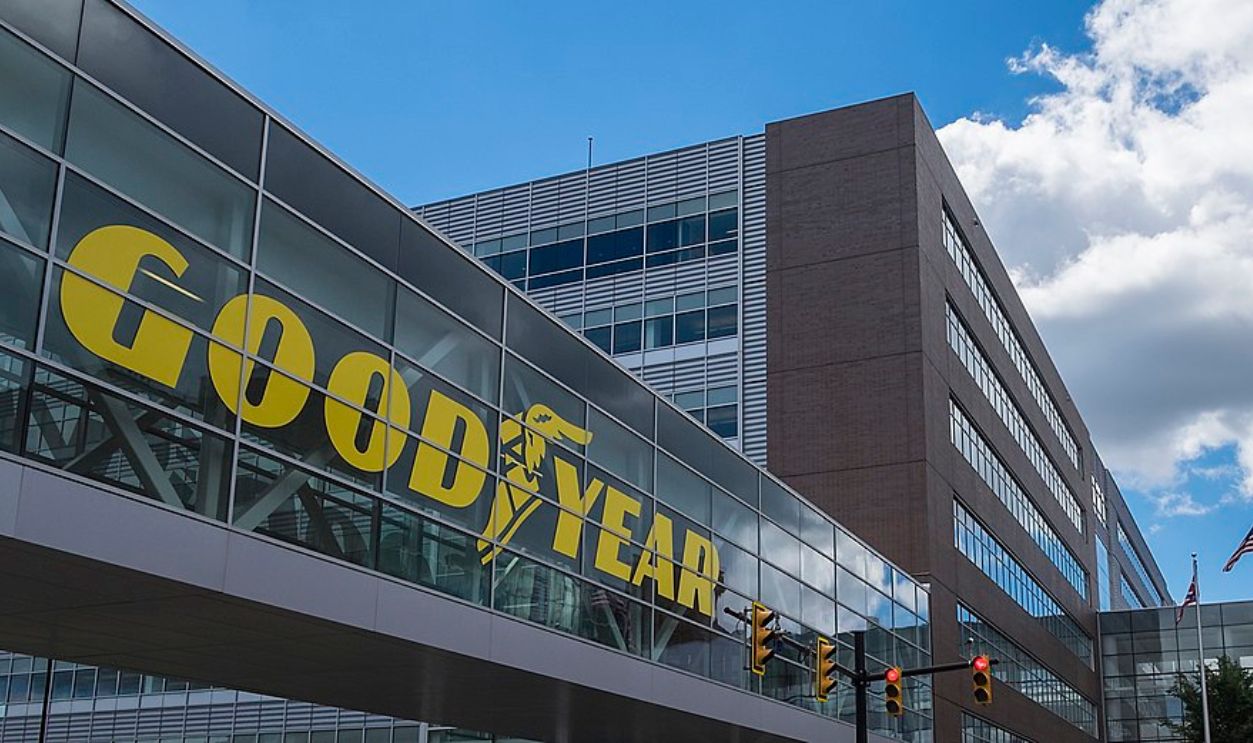 CapturedGlimpsesPhoto, CC BY-SA 4.0, Wikimedia Commons
CapturedGlimpsesPhoto, CC BY-SA 4.0, Wikimedia Commons
9. The Unique Addition Was Nitrogen
This team overinflated the Thunderbolt Whitewall tires to maintain the rigidity of the sidewalls and prevent the wheels from overheating. The car reached 170 mph during the test but was never mass-produced. Why? It was too expensive to make one.
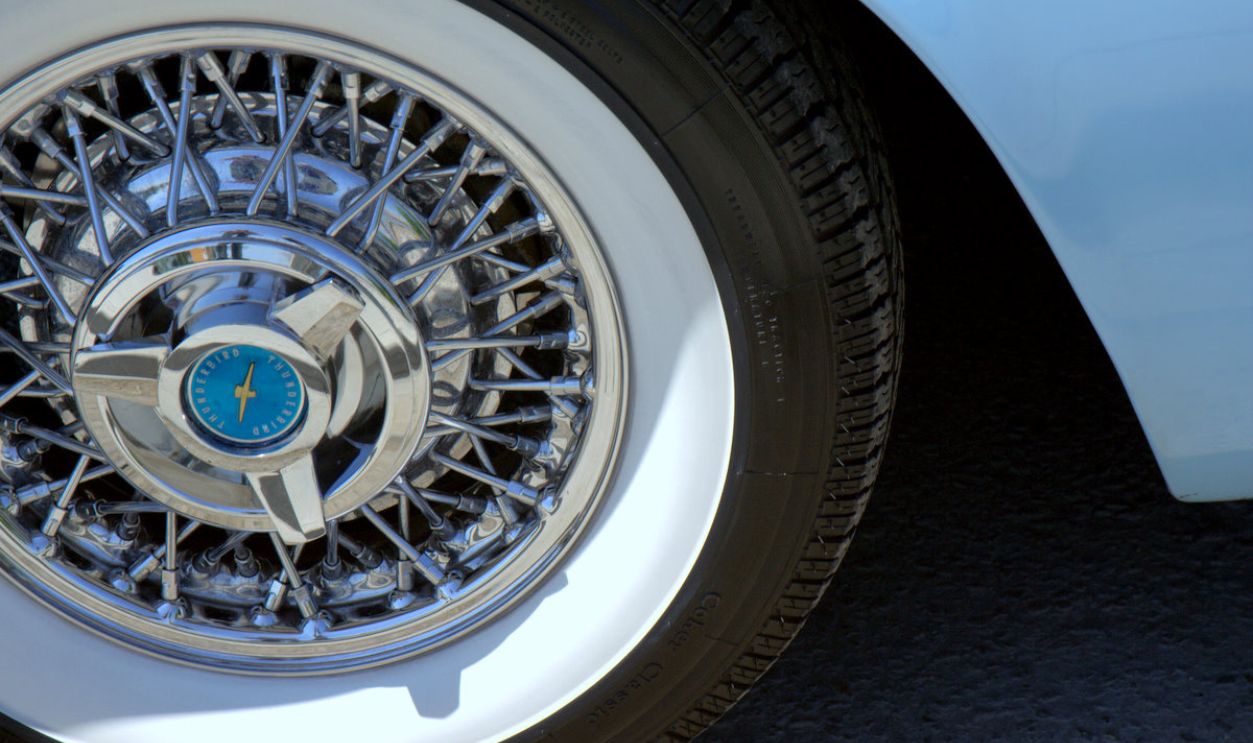 Dante Alighieri, CC BY-SA 3.0, Wikimedia Commons
Dante Alighieri, CC BY-SA 3.0, Wikimedia Commons
10. Let’s Talk Price!
Based on the 2019 Mecum auction in Kissimmee, Florida, its value currently stands at $2.2 million. This makes it the most expensive Mustang ever sold, and the owner? Drum rolls: It wasn’t disclosed. Bummer!
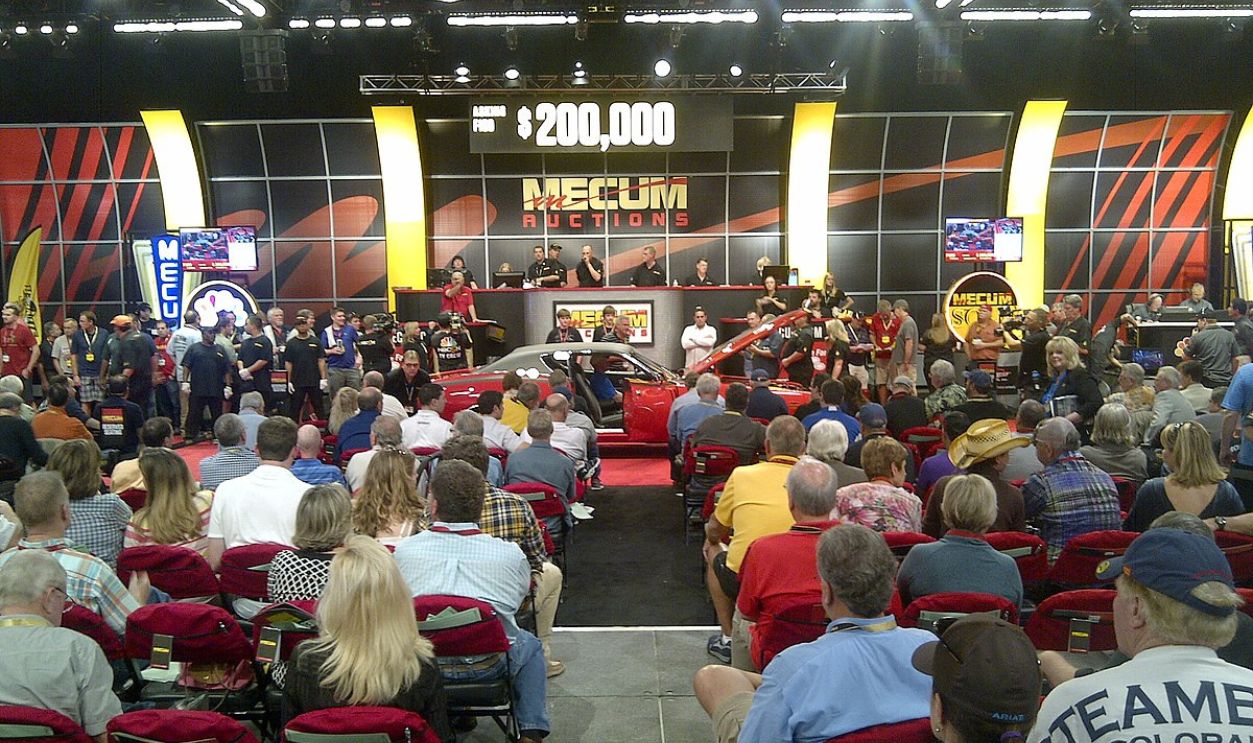 artistmac, CC BY-SA 2.0, Wikimedia Commons
artistmac, CC BY-SA 2.0, Wikimedia Commons
11. 1964 Indy Pace Car Replica
In the automotive world, a replica is a reproduced model that mimics another. This 1964 Indy Pace Car Replica mimics the original Pace car in the 1964 Indianapolis 500, a racing event that introduced the Ford Mustang as the official pace car.
12. It's Another Promotional Ride
The 1964 Indy Pace Car Replica is another Ford promotional car that debuts the Mustang. The goal was to generate excitement among car fans so that they would know about the vehicle and even purchase one. If lucky, you would have landed one of the 190 replicas produced.
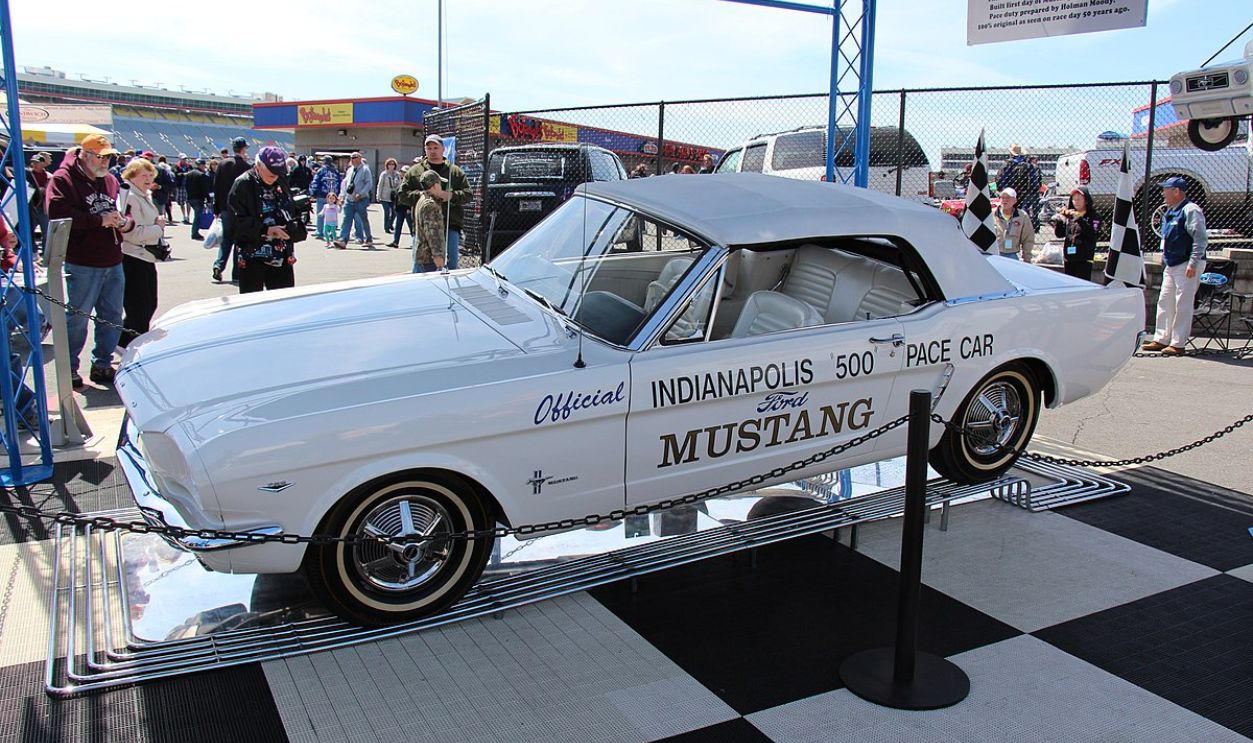 Sicnag, CC BY 2.0, Wikimedia Commons
Sicnag, CC BY 2.0, Wikimedia Commons
13. Uniform Colors, Just Like The Original
The essence of a replica is to look like the original, right? So much so that the 1964 Indy Pace Car Replica took the “Casablanca White” hue with the distinctive blue racing stripes. The only difference is that the replicas had a badge to distinguish them from the OG.
14. What’s A Pace Car In The First Place?
When you attend a race, you’ll notice a car on the track before the race begins. This is a pace car! The main reason for having one is to regulate speed and ensure drivers remain orderly. It also allows drivers to warm up their engines!
 The359, CC BY-SA 3.0, Wikimedia Commons
The359, CC BY-SA 3.0, Wikimedia Commons
15. Why Ford Make So Many Pace Cars
The reason is simple: marketing!
A car leading the pack will undoubtedly be seen, which always works in Ford's favor. In addition, the limited edition appeal attracts car enthusiasts to the car, making them want to get the car afterward.
16. 1970 Ford Mustang Mach 1 Twister Special
Only 96 units were produced of this baby! The Mustang Mach 1 was a Kansas City District Sales Office promo car with a unique tornado decal and a black interior. Half the vehicles had a 428 cubic inch Super Cobra Jet V8 engine, and the other half a 351 cubic inch Cleveland V8.
17. They Were To Be Pace Cars
Lawrence "Larry" LoPatin's American Raceways Incorporated (ARI) managed several racetracks and had this model as a pace car. However, the ARI faced a few money problems, which led to them handing over the project to the Kansas City District Sales Office.
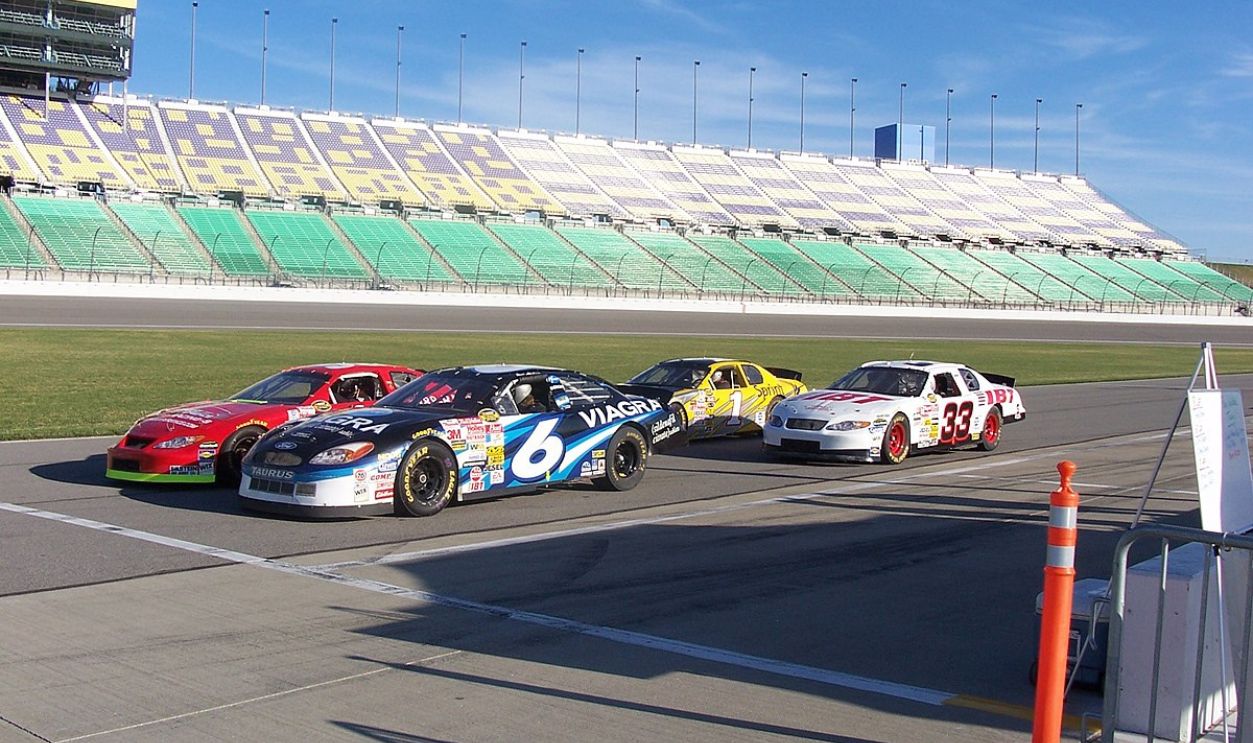 Sandy / Halo, CC BY 2.0, Wikimedia Commons
Sandy / Halo, CC BY 2.0, Wikimedia Commons
18. Today’s Twister Special Owners
Over the years, the Mach 1 has switched hands between enthusiasts and collectors. The exchanges have available registries, but they rarely disclose owner's names. In 2021, the 1970 Ford Mustang Mach 1 Twister Special sold at an auction for $82,500, but the name remained concealed.
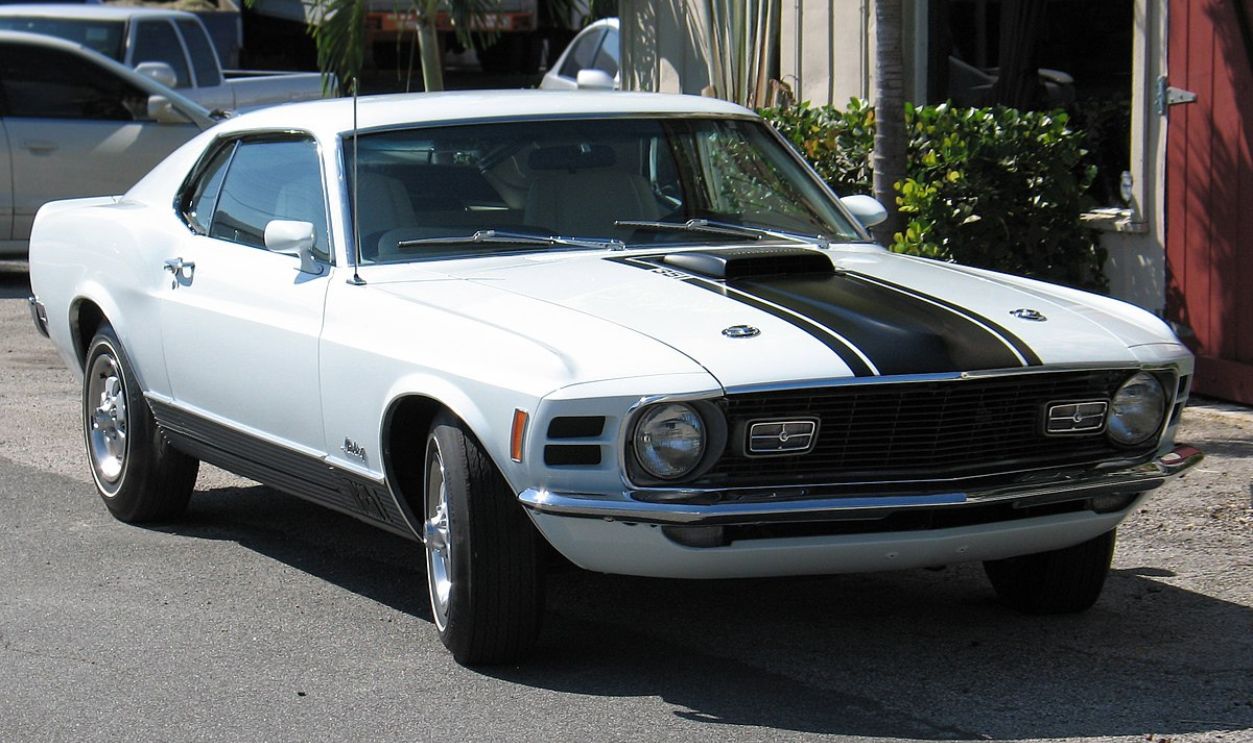 Classicsworkshop, CC BY-SA 4.0, Wikimedia Commons
Classicsworkshop, CC BY-SA 4.0, Wikimedia Commons
19. 1965 Shelby Mustang GT350R
The 1965 Shelby Mustang GT350R, whose price lingers in the millions (selling at $3.85 million in a 2020 auction), graces our list of the ten rarest Mustangs. This race car features a 289 cubic inch V8 engine with 306 hp, moving from 0-60 mph in just 6.5 seconds.
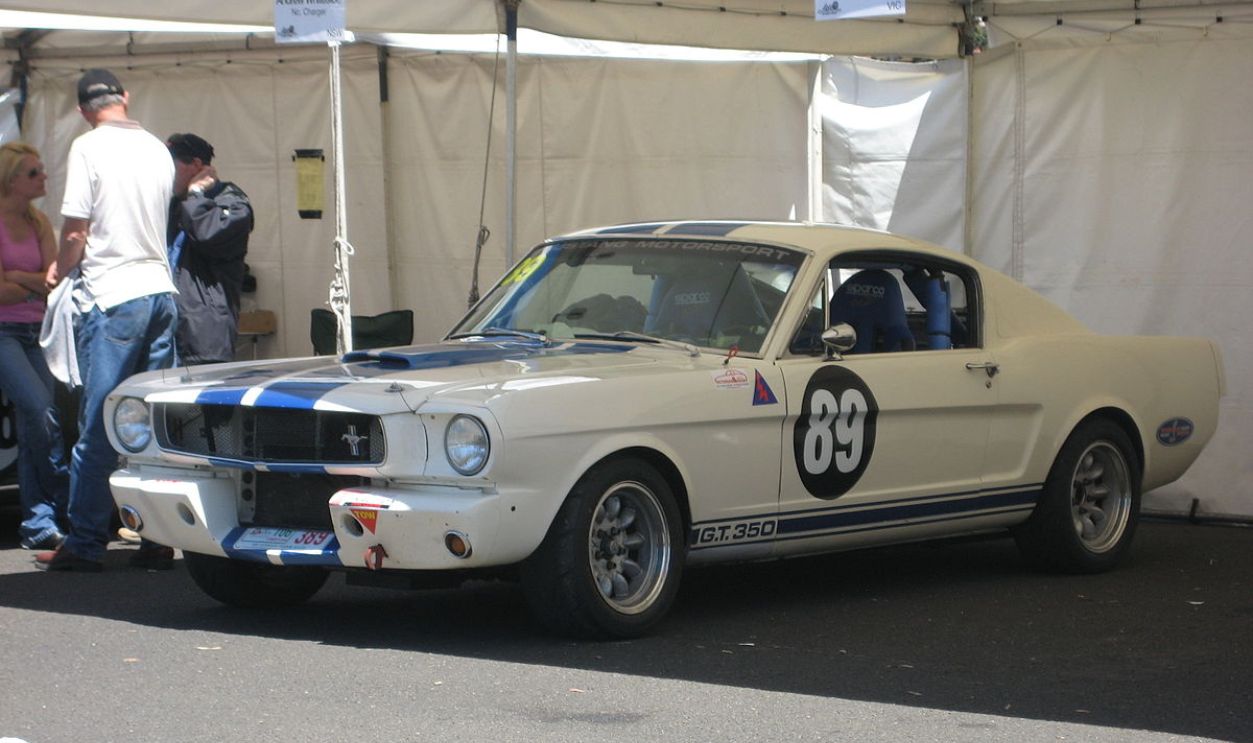 Sicnag, CC BY 2.0, WIkimedia Commons
Sicnag, CC BY 2.0, WIkimedia Commons
20. That’s Not All: It’s Also An Award Winner
The GT350R has accolades for the 2017 Shelby Show Circuit as the Triple Crown. Others were the Best in Class in the Amelia Island Concours and participated at the Pebble Beach Concours d’Elegance. It also won at the SCCA National B-Production Championships in 1965, 1966, and 1967.
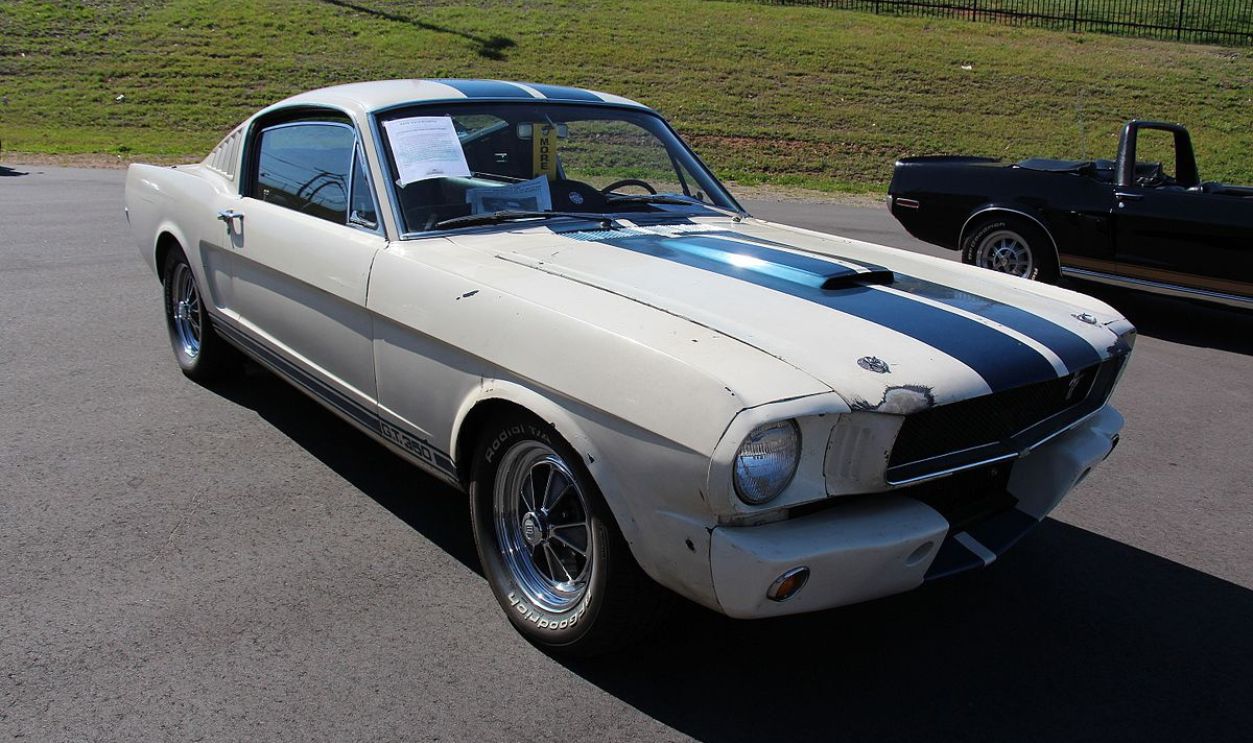 Sicnag, CC BY 2.0, Wikimedia Commons
Sicnag, CC BY 2.0, Wikimedia Commons
21. What’s It Worth?
One of the 96 units sold for $3.85 million during an auction, and the exact car was the chassis 5R002. If the steering wheel could talk, it could narrate its experience with popular drivers like Bob Bondurant and Ken Miles. Today, it stays safe with John Atzbach, a car collector.
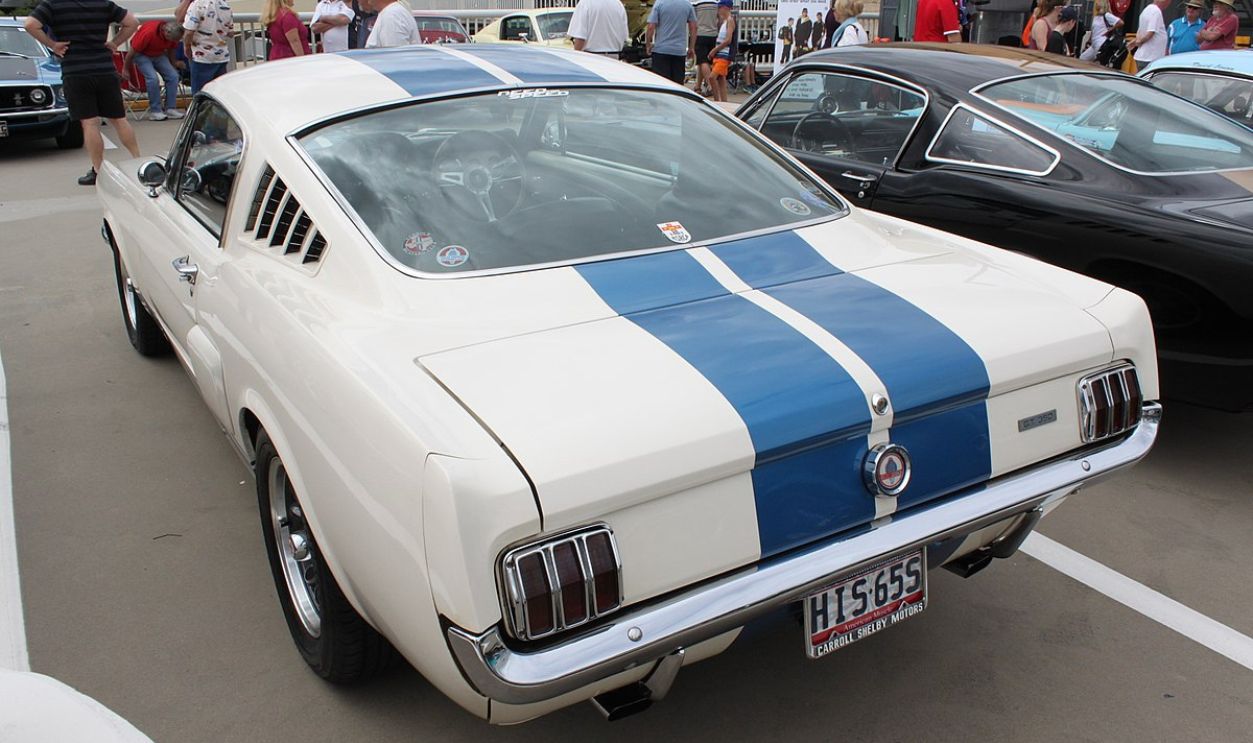 Jeremy, CC BY 2.0, Wikimedia Commons
Jeremy, CC BY 2.0, Wikimedia Commons
22. 1970 Boss 429 Mustang
Do you know car manufacturers don’t randomly name cars? It is intentional, and here is how: "Boss" in the 1970 Boss 429 Mustang title exudes power and authority. The number 429 refers to the engine’s displacement, a 429 cubic inch V8 engine.
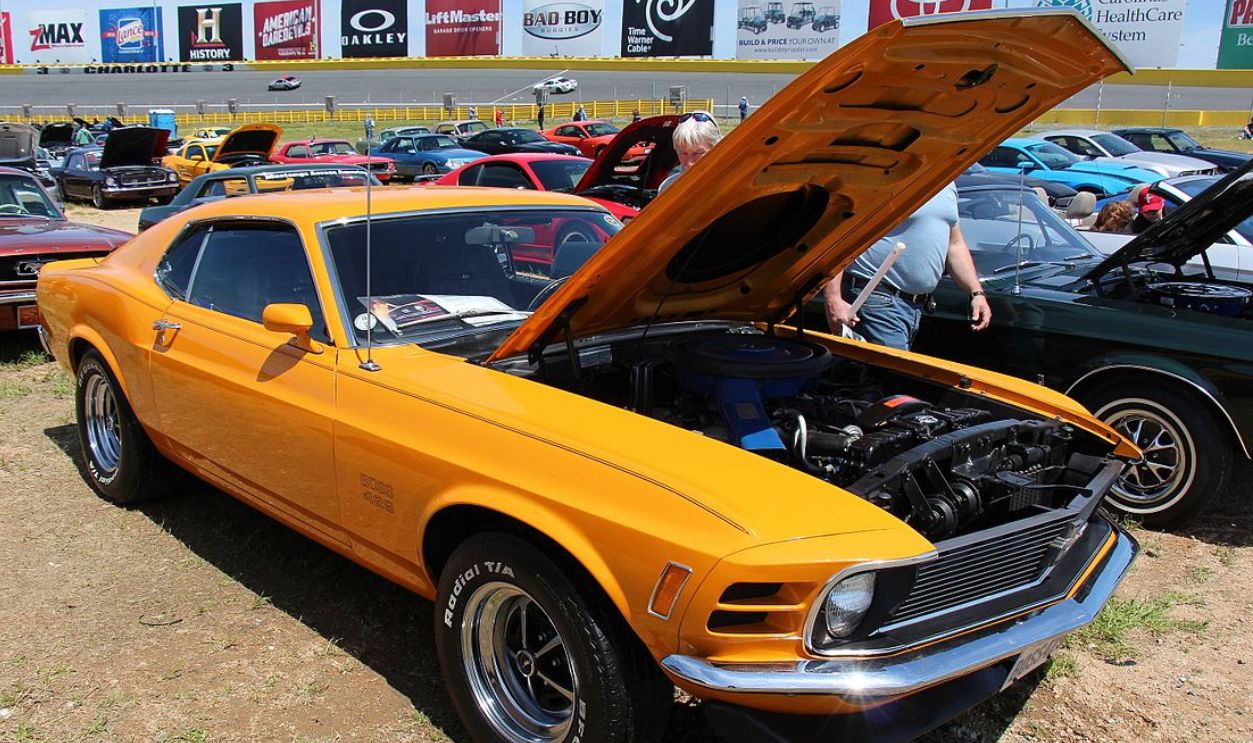 Sicnag, CC BY 2.0, Wikimedia Commons
Sicnag, CC BY 2.0, Wikimedia Commons
23. 1970s Boss 429 Exterior Variety Was Impressive
The 1359 units of the Boss 429 came in five colors: Grabber Blue, Grabber Orange, Grabber Green, Pastel Blue, and Calypso Coral. Those exteriors carried powerful chin spoilers, "Boss 429" Fender decals, black hood scoops, and twin air intakes.
24. Despite Their Powerful Engine, They Never Won A Race
Ford made the Boss 429 to meet the NASCAR requirements—with high-performance capabilities—but her racetrack performance was limited. Instead of racetracks, most found homes in collectors' and car enthusiasts' displays.
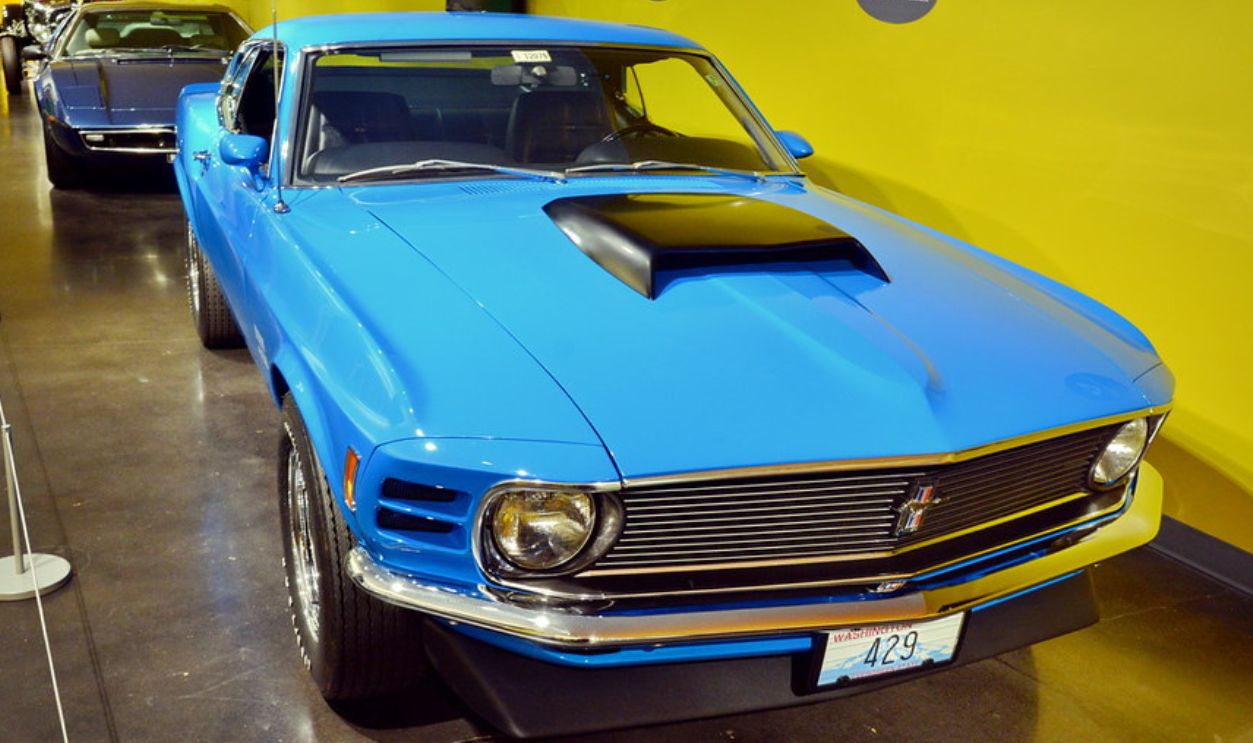 Jim Culp, Flickr25. 2012 Boss 302 Laguna Seca Edition
Jim Culp, Flickr25. 2012 Boss 302 Laguna Seca Edition
Ford only created 767 units of the Laguna Seca Edition without the typical rear seat. This decision to remove the back seats reduced weight and improved rigidity. When manufacturers improve rigidity, they enhance the structural stability, handling, and overall driving performance.
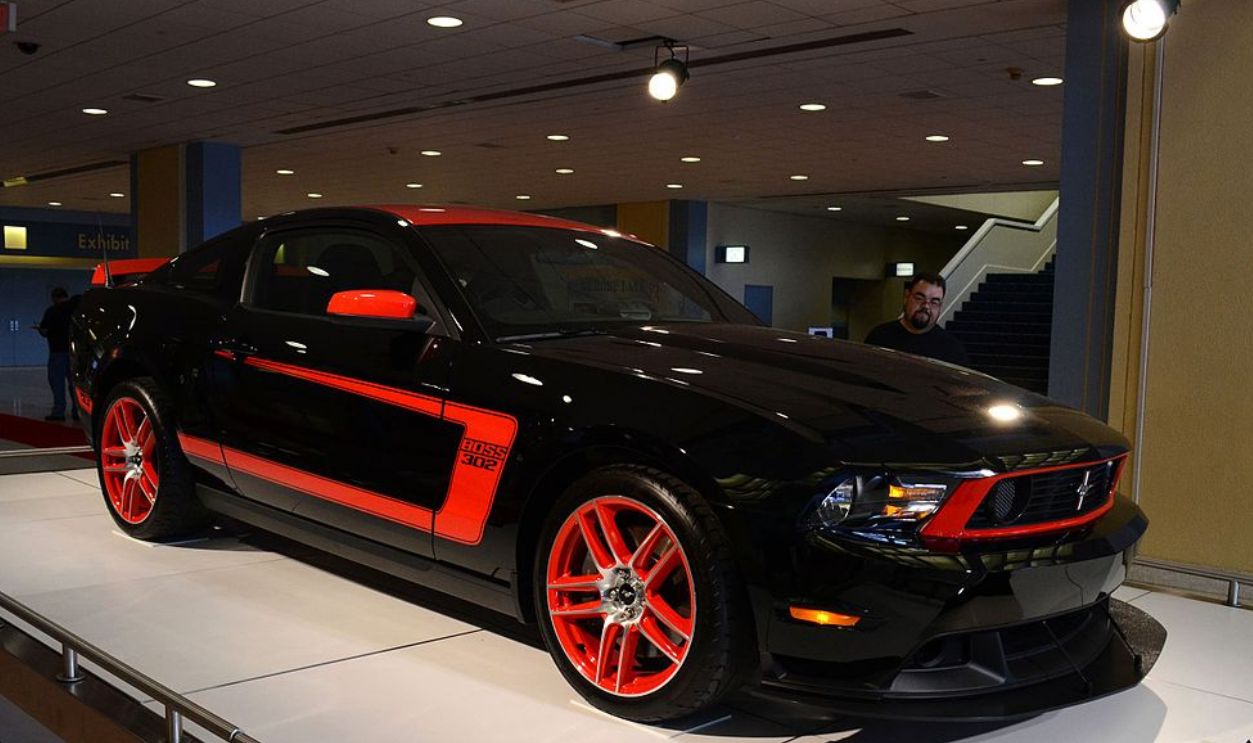 Brett Levin, CC BY 2.0, Wikimedia Commons
Brett Levin, CC BY 2.0, Wikimedia Commons
26. The Boss 302 Laguna Seca Edition Is A Fast Car
The Boss 302’s stiff 6-speed manual transmission is no joke. The powerful engine moves from zero to 62 mph in 4.2 seconds and attains a maximum speed of 150 mph. The front and rear dampers are adjustable, and its unique chassis has refined how the 302 negotiates corners.
27. The Boss 302 Value Varies
With only 750 ever produced, you might have to pay at least $40,000 to own a Boss 302 Laguna Seca Edition. This can go even higher based on the car’s condition, market demand, and mileage. Of course, a lesser mileage on a well-maintained Boss 302 might accrue more.
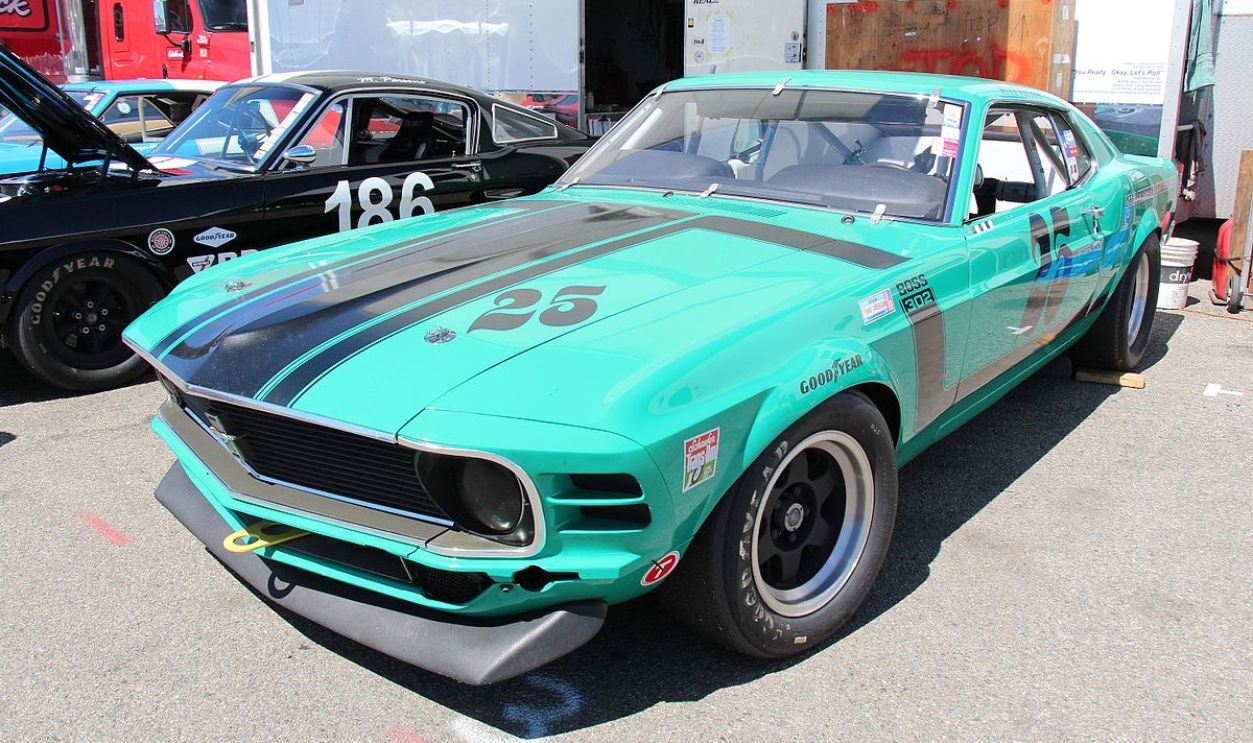 Sicnag, CC BY 2.0, Wikimedia Commons
Sicnag, CC BY 2.0, Wikimedia Commons
28. 1967 Ford Mustang 289 HiPo (K-Code)
This Ford Mustang is a rare gem and was developed under Donald N. Frey's supervision as a redesign of the original Mustang. This ride was bigger, meaner, and more aggressive in red, blue, white, black, and dark moss-green colors.
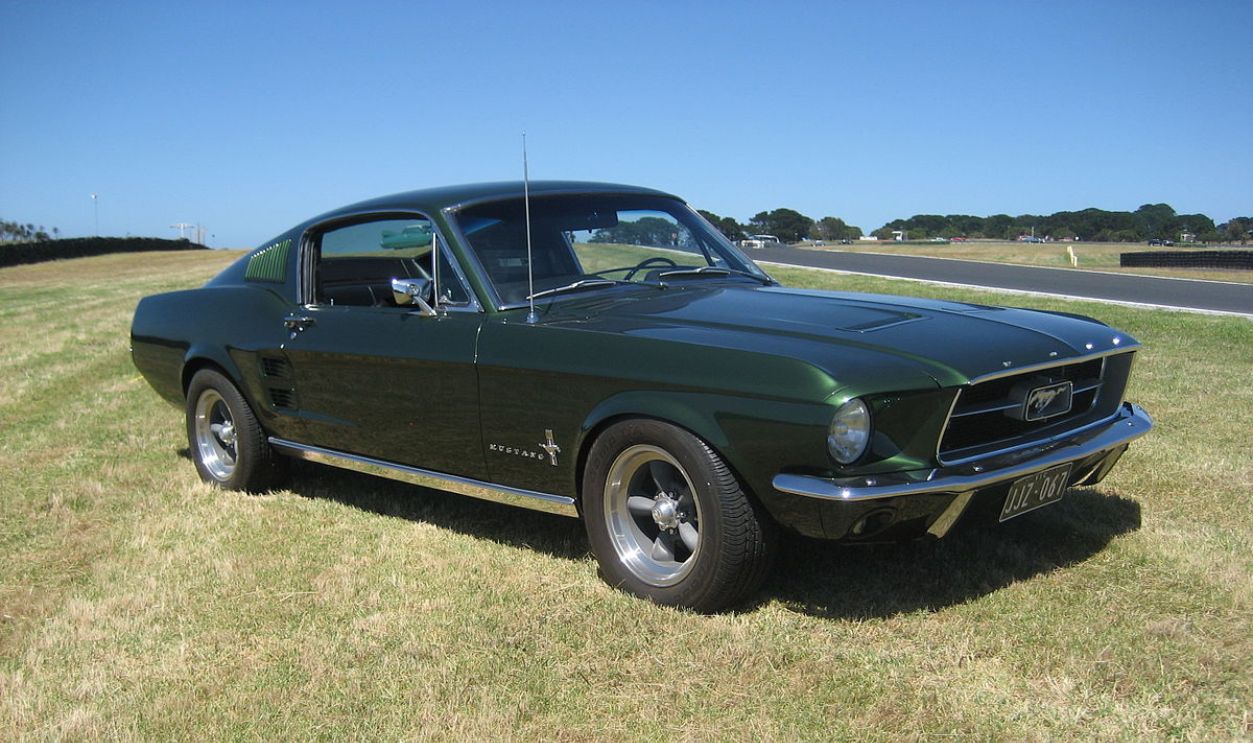 Sicnag, CC BY 2.0, Wikimedia Commons
Sicnag, CC BY 2.0, Wikimedia Commons
29. The K-Code Had A Special Engine Touch
The HiPo (which means high performance) engine hid a unique “Cobra” valve cover design under its hood. This special touch was from the original Shelby Cobras Sports car.
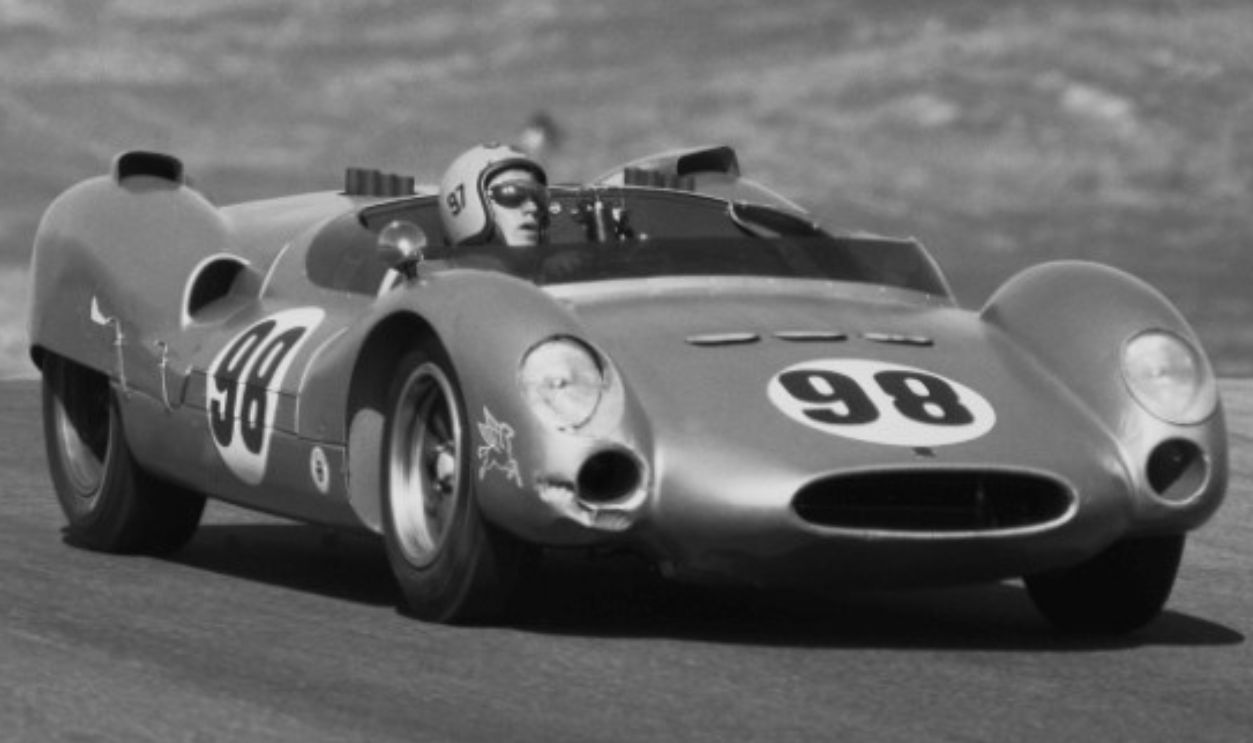 Allen Kuhn, CC BY-SA 3.0, Wikimedia Commons
Allen Kuhn, CC BY-SA 3.0, Wikimedia Commons
30. The K-Code Isn’t Just A Nickname
As aforementioned, car names are beyond random, so much so that the K-Code refers to a unique engine block. This engine block is a factory-installed, high-performing air cleaner. All the 489 K-Codes were built to perform.
31. 1964 World's Fair Skyway Mustang
The 1964 World's Fair Skyway Mustang was a special edition for the 1964 New York World’s Fair to promote Ford’s car model. This model had an impressive paint job and outstanding designs to attract people who are fond of fairs.
32. The Reason Of The “Skyway” Addition
We all know that fairs are exciting, sometimes featuring shows and events that define gravity and other laws of nature. At the fair, Ford included a Skyway ride. Visitors could view the grounds from above as they looked closely at the Mustang!
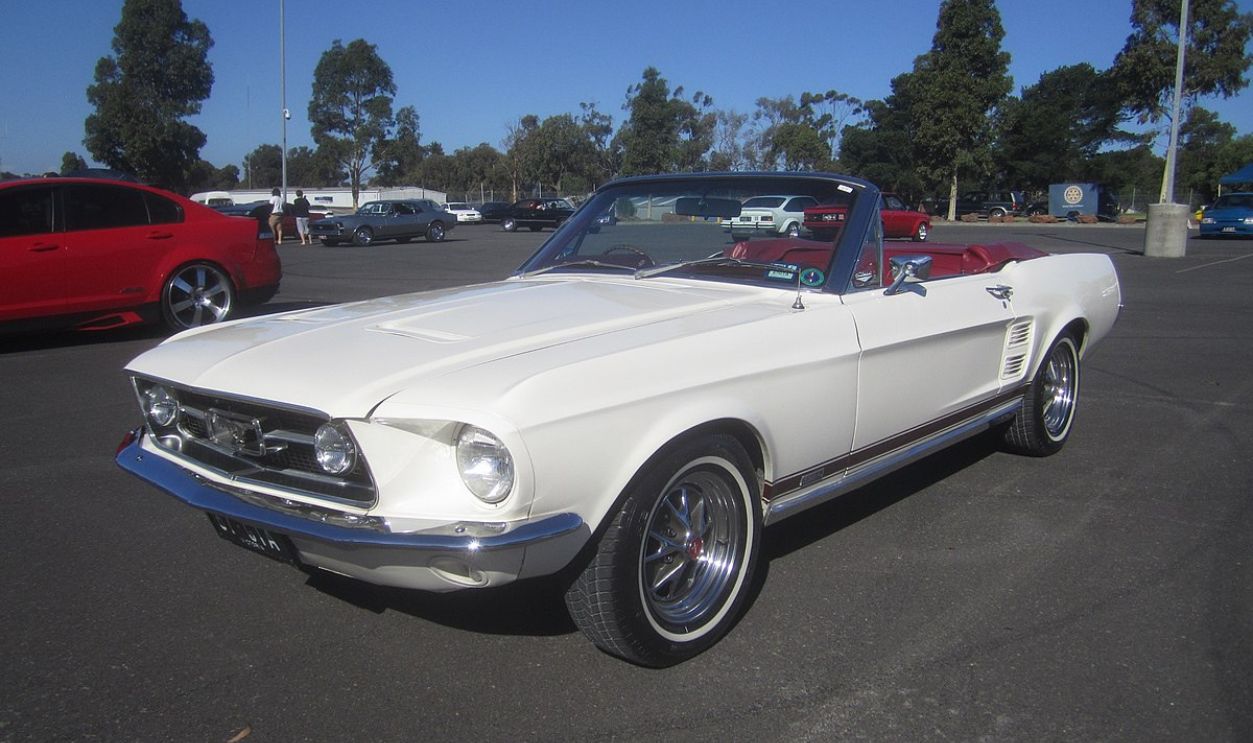 Sicnag, CC BY 2.0, Wikimedia Commons
Sicnag, CC BY 2.0, Wikimedia Commons
33. The Owner Of The 1964 World's Fair Skyway Mustang?
Dr. John Mansell acquired this special edition ride in 1965. It is a black convertible with VIN 5F08F100004. It’s okay to wonder what that number even means.
34. What Is VIN 5F08F100004?
A VIN is a Vehicle Identification Number. Here’s the breakdown: 5 is the year of manufacture. F represents the assembly plant; in this case, the 1964 World's Fair Skyway Mustang was assembled in Dearborn, Michigan. 08 indicates the body type, meaning a convertible.
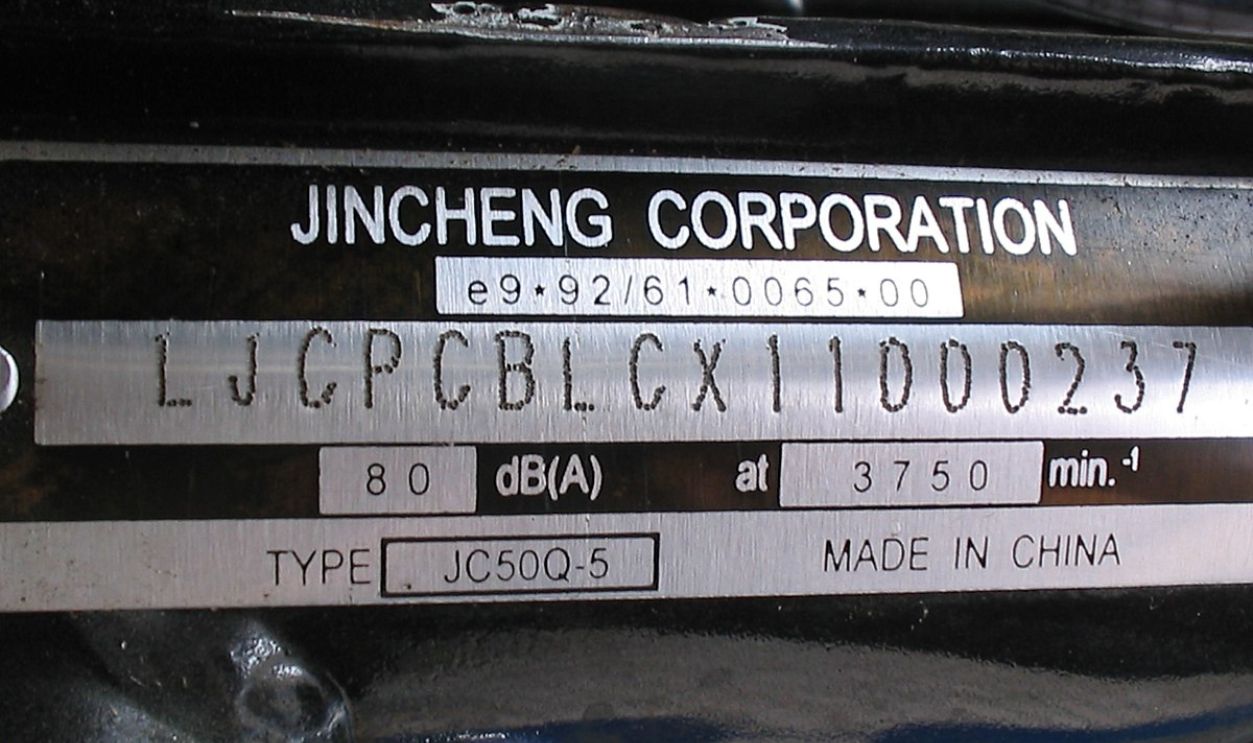 Michiel1972, CC BY-SA 3.0, Wikimedia Commons
Michiel1972, CC BY-SA 3.0, Wikimedia Commons
35. The FF100004 Stands For
The F is the engine type (260 cubic inch V8), and the 100004 is a sequential production number. This 1964 World's Fair Skyway Mustang was the fourth vehicle produced in the Dearborn facility. So, now you know!
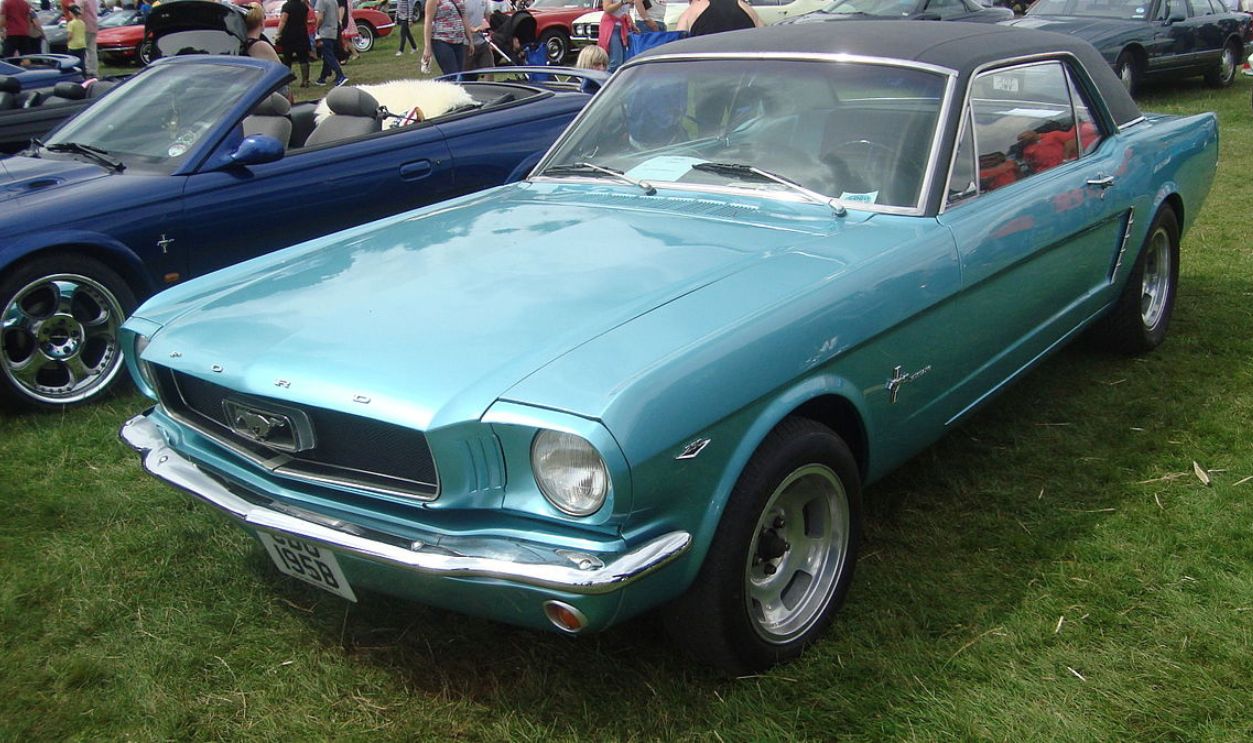 Kieran White, CC BY 2.0, Wikimedia Commons
Kieran White, CC BY 2.0, Wikimedia Commons
36. Ford Mustang McLaren M81
When Ford and McLaren came together in 1980, they produced only ten of the rare Ford Mustang McLaren M81. It all began with Ford wanting to boost its four-cylinder Fox Body Mustang to meet the changing market needs.
37. Ford’s Special Vehicle Operations (SVO) Division Took Over
The SVO chose McLaren because of its Formula One and Can-Am racing experience. The McLaren team jumped on the 2.3-liter turbocharged engine, boosting it from 5 to 11 PSI (pounds per square inch). This meant the engine took in more air and boosted performance.
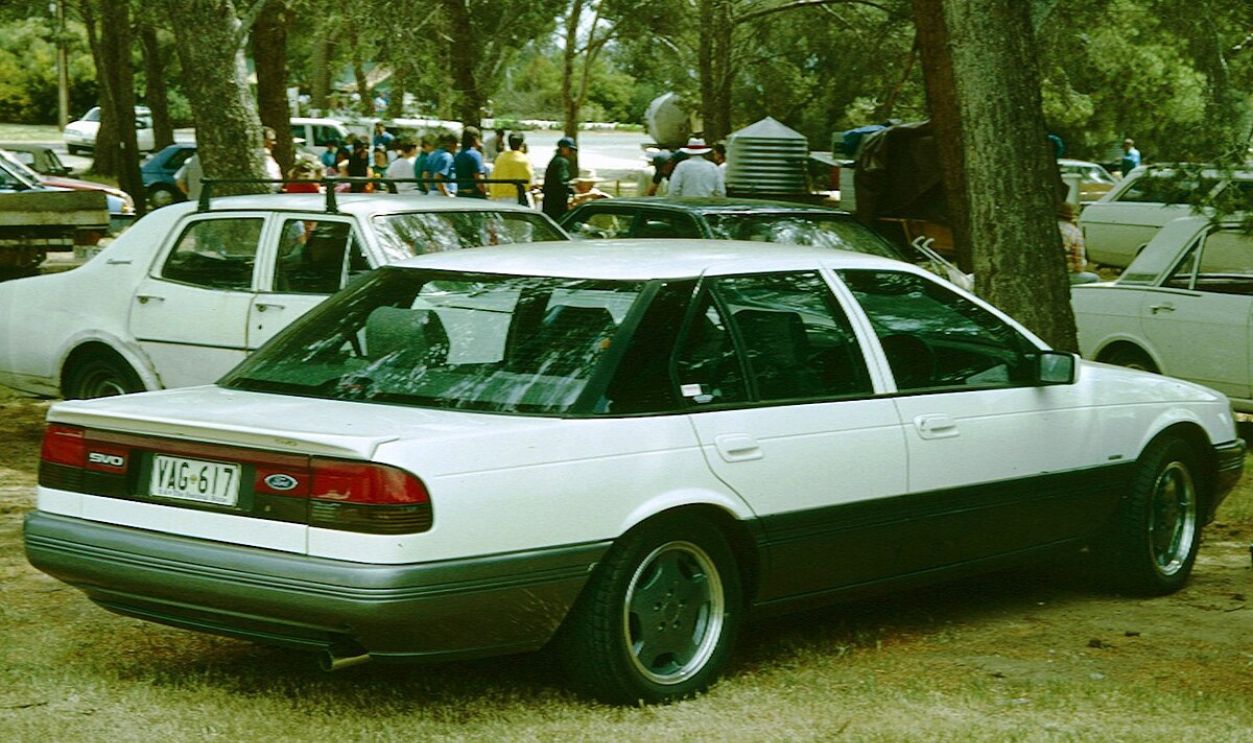 Charles01, CC BY-SA 3.0, Wikimedia Commons
Charles01, CC BY-SA 3.0, Wikimedia Commons
38. The Boost Improved Engine From 132 HP To 175 HP
The increase in PSI was a significant boost, from 132 to 175 hp. This also improved the torque from 144 lb-ft at 5,400 rpm to 145 lb-ft at just 3,000 rpm. Do you have an idea what this means?
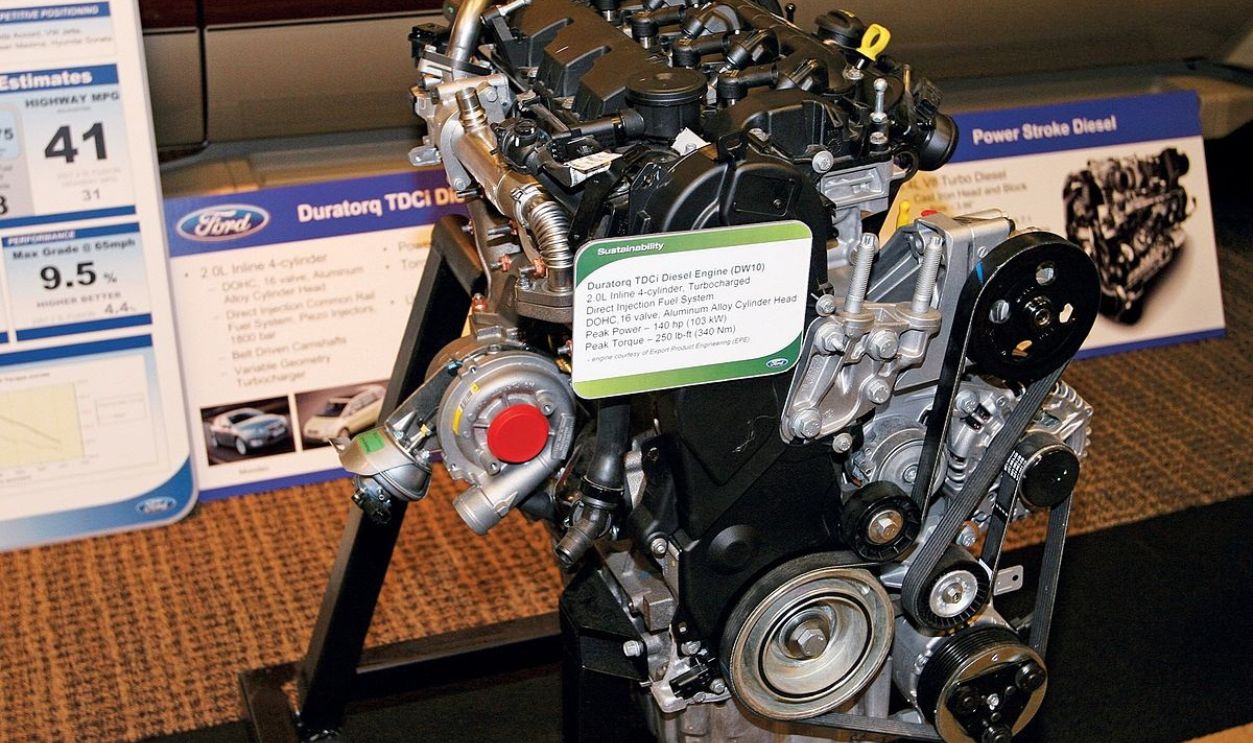 Astrowarinhari, CC BY-SA 3.0, Wikimedia Commons
Astrowarinhari, CC BY-SA 3.0, Wikimedia Commons
39. Torque Explained
Torque is the force a car needs to start moving and even climb elevated surfaces. This force helps the engine turn the wheel. A higher torque means a vehicle starts moving faster and pulls heavier objects. See how the McLaren helped?
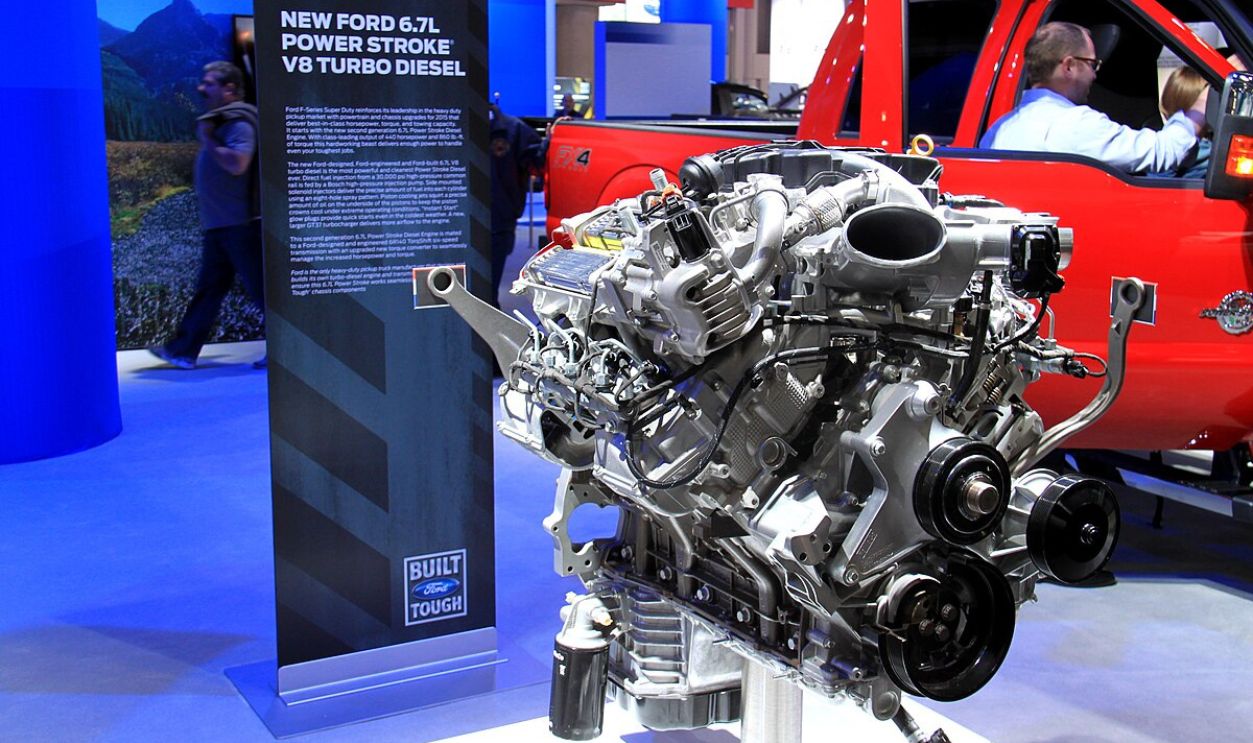 Joseph Brent, CC BY-SA 2.0, Wikimedia Commons
Joseph Brent, CC BY-SA 2.0, Wikimedia Commons
40. Engine Modification Was Only Half The Job
Ford and McLaren further enhanced the overall M81 design, borrowing inspiration from IMSA race cars. They included IMSA-style wheel arches, functional hood scoops, and a large hood budge. The suspension, brakes, and wheels were also enhanced.
 Praveen Umanath, CC BY 2.0, Wikimedia Commons
Praveen Umanath, CC BY 2.0, Wikimedia Commons
41. More Upgrades
A fast car also needs a safety upgrade. In that regard, the Ford Mustang McLaren M81 got Recaro bucket seats with an added roll cage for extra safety. Steward-Warner gauges were also placed to add a sporty touch.
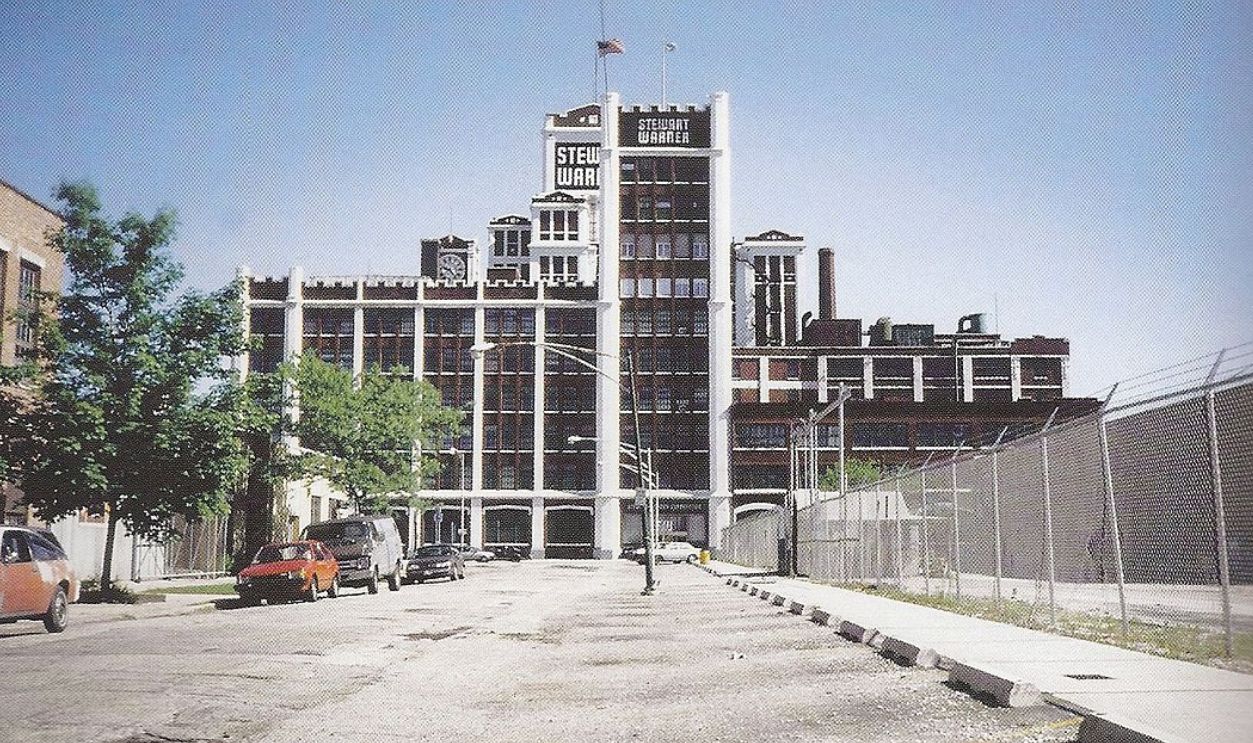 Burke, Tom, CC BY-SA 3.0, Wikimedia Commons
Burke, Tom, CC BY-SA 3.0, Wikimedia Commons
42. The Ford Mustang McLaren M81 Production Limit Changes
The initial plan was for Ford and McLaren to produce 250 units, but that changed. The car’s retail price was high: $25,000, almost five times the original price of $5,616. This deterred people from buying, reducing the number of units to only ten.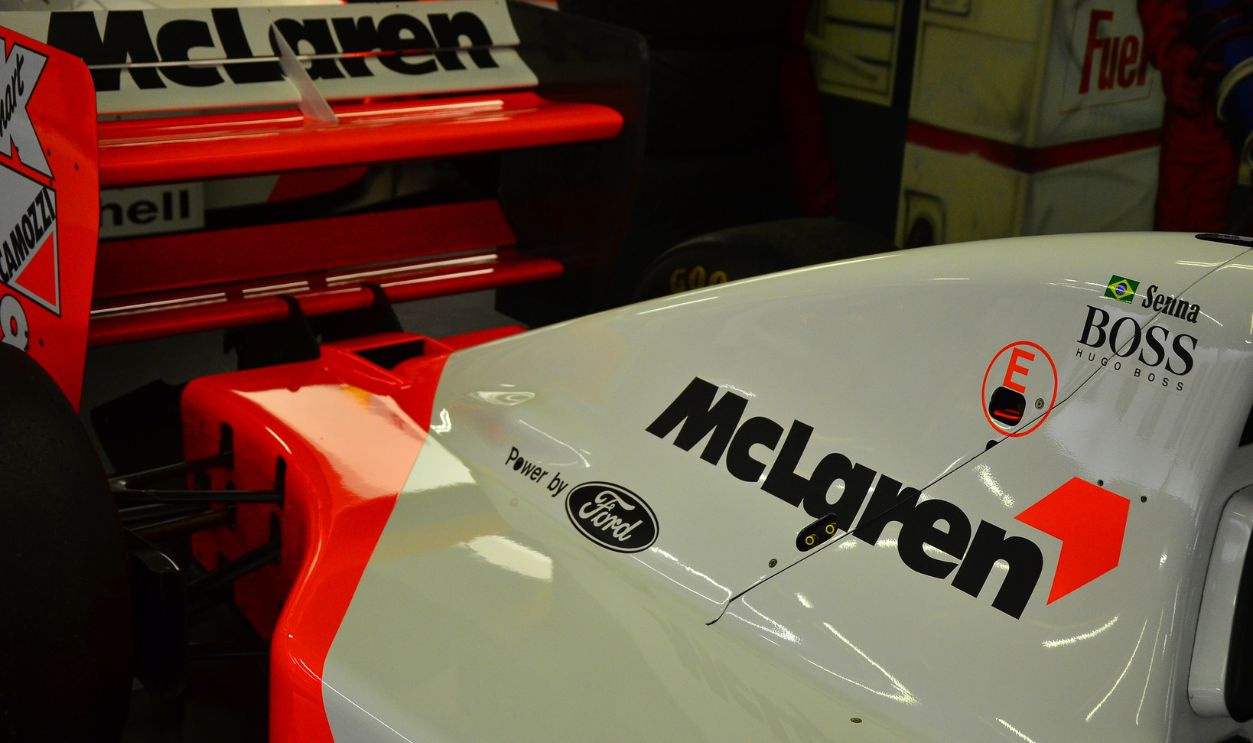 Ben Sutherland, Flickr
Ben Sutherland, Flickr
43. The Prototype Was A SuperStar
The first-ever M81 toured dealerships and was featured on the 1980 December MotorTrend magazine issue cover. The prototype's value is estimated between $75,000 and $100,000.
 MercurySable99, CC BY-SA 4.0, Wikimedia Commons
MercurySable99, CC BY-SA 4.0, Wikimedia Commons
44. Ford, The Automotive Giant
Ford has quite the track record of making prototypes, special editions, and everyday models that span generations. While we couldn’t cover it all here, these ten picks are the elusive ones you'll rarely see cruising down your street!


